Now I'll write the content following all the guidelines.The exposed basement ceiling has evolved from a budget necessity into a celebrated design choice that transforms underground spaces into stunning focal points. Modern basement designs increasingly embrace the raw, industrial aesthetic of visible beams, ductwork, and pipes, turning what was once hidden infrastructure into architectural drama. This approach maximizes ceiling height while creating a loft-like, open feel that makes basements feel more spacious and contemporary. The versatility of exposed ceilings allows homeowners to blend practicality with aesthetics, creating modern, loft-like vibes that suit everything from home theaters to family recreation spaces. Whether you're working with tight budgets or pursuing cutting-edge aesthetics, these ceiling solutions offer endless possibilities for creating memorable basement environments that feel intentional and inviting.
1. Classic White Painted Basement Ceiling
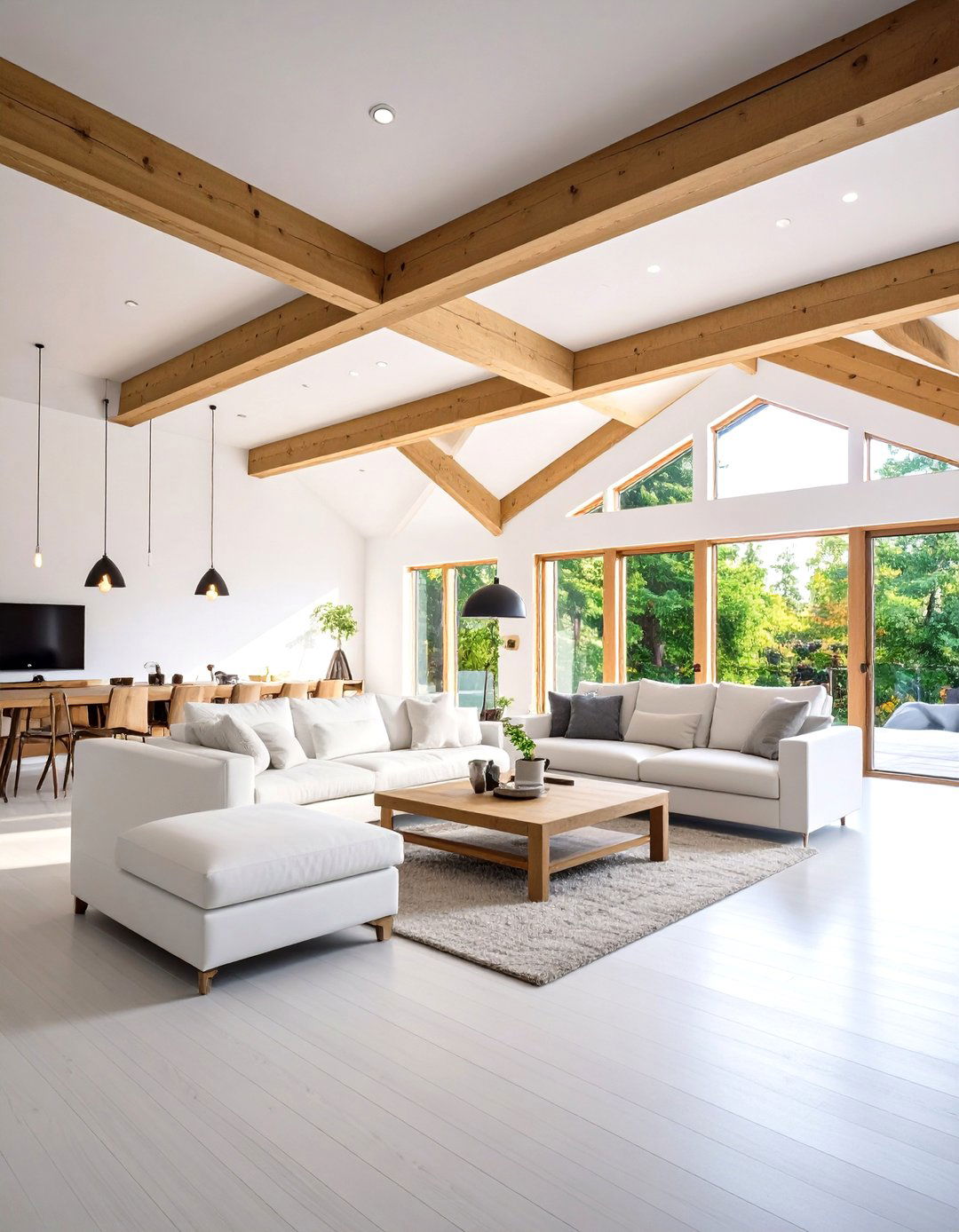
A crisp white painted basement ceiling instantly brightens dark underground spaces and creates the illusion of higher ceilings. This timeless approach transforms exposed joists, beams, and ductwork into a cohesive architectural element that feels fresh and modern. White basement ceilings make the whole space much brighter and cheerier, reflecting available light throughout the room and making it feel more welcoming. The clean, unified appearance works beautifully with any decor style, from contemporary to farmhouse. White paint will need a few coats of primer before applying finish paint because bare wood ceiling joists will suck up paint quickly. Use a flat finish to minimize imperfections and create smooth light distribution. This versatile choice pairs perfectly with both light and dark wall colors while maintaining accessibility to utilities when needed.
2. Industrial Black Basement Ceiling Design
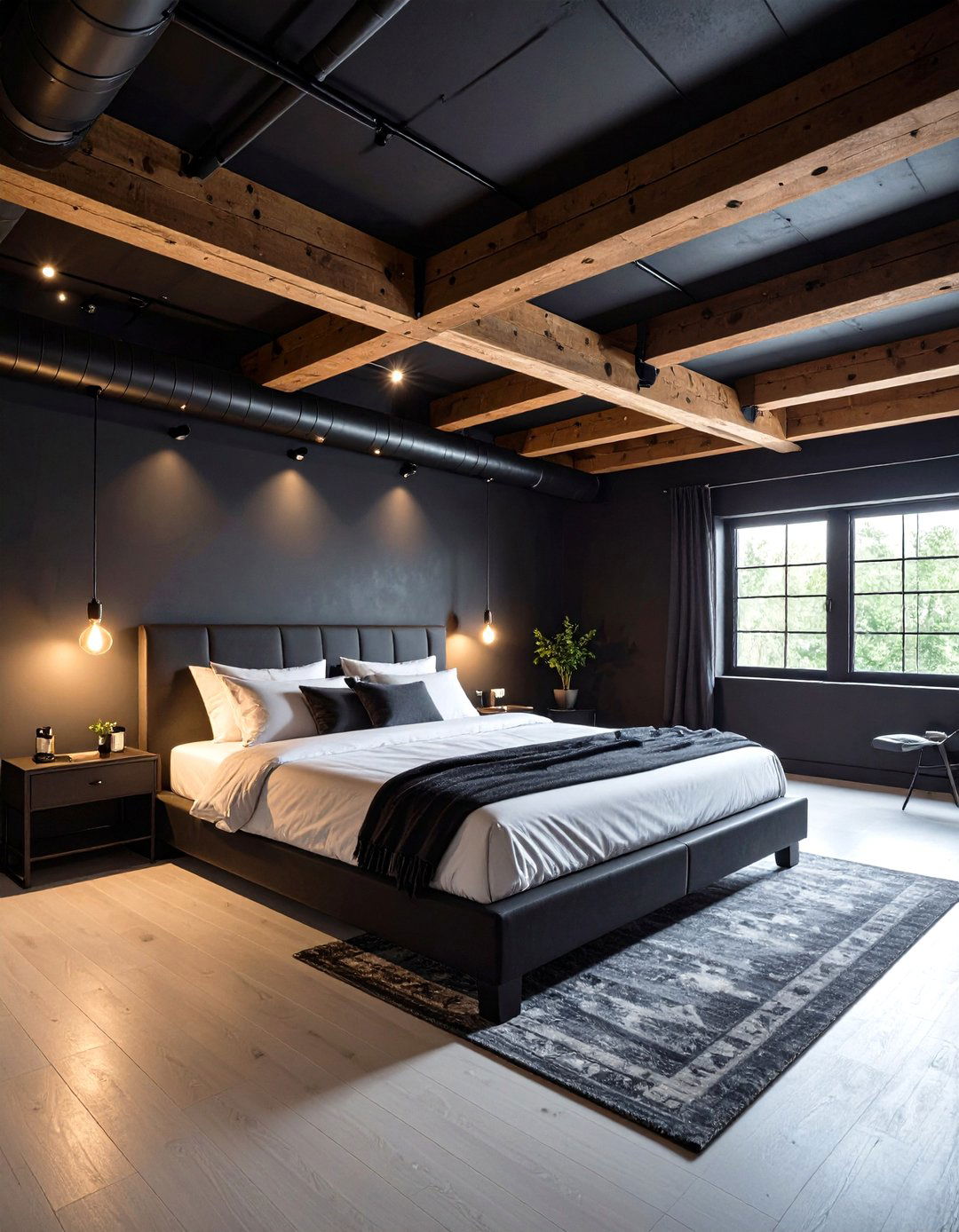
Bold black paint transforms exposed basement ceilings into sleek, modern spaces with dramatic sophistication. This striking choice hides imperfections while adding depth and creating a cozy, grounded atmosphere perfect for home theaters or contemporary living areas. Dark colors on the ceiling, like black, make a room feel more grounded and hide imperfections. The dramatic contrast with lighter walls and flooring creates visual interest and makes the space feel intentionally designed. Flat black ceiling paint gives each area a clean and cohesive feel, unifying various mechanical elements into one stunning design feature. Consider adding dimmer-controlled lighting to enhance the moody ambiance. This bold approach works exceptionally well in entertainment spaces where you want to create an intimate, sophisticated atmosphere that rivals commercial venues.
3. Rustic Wood Beam Basement Ceiling
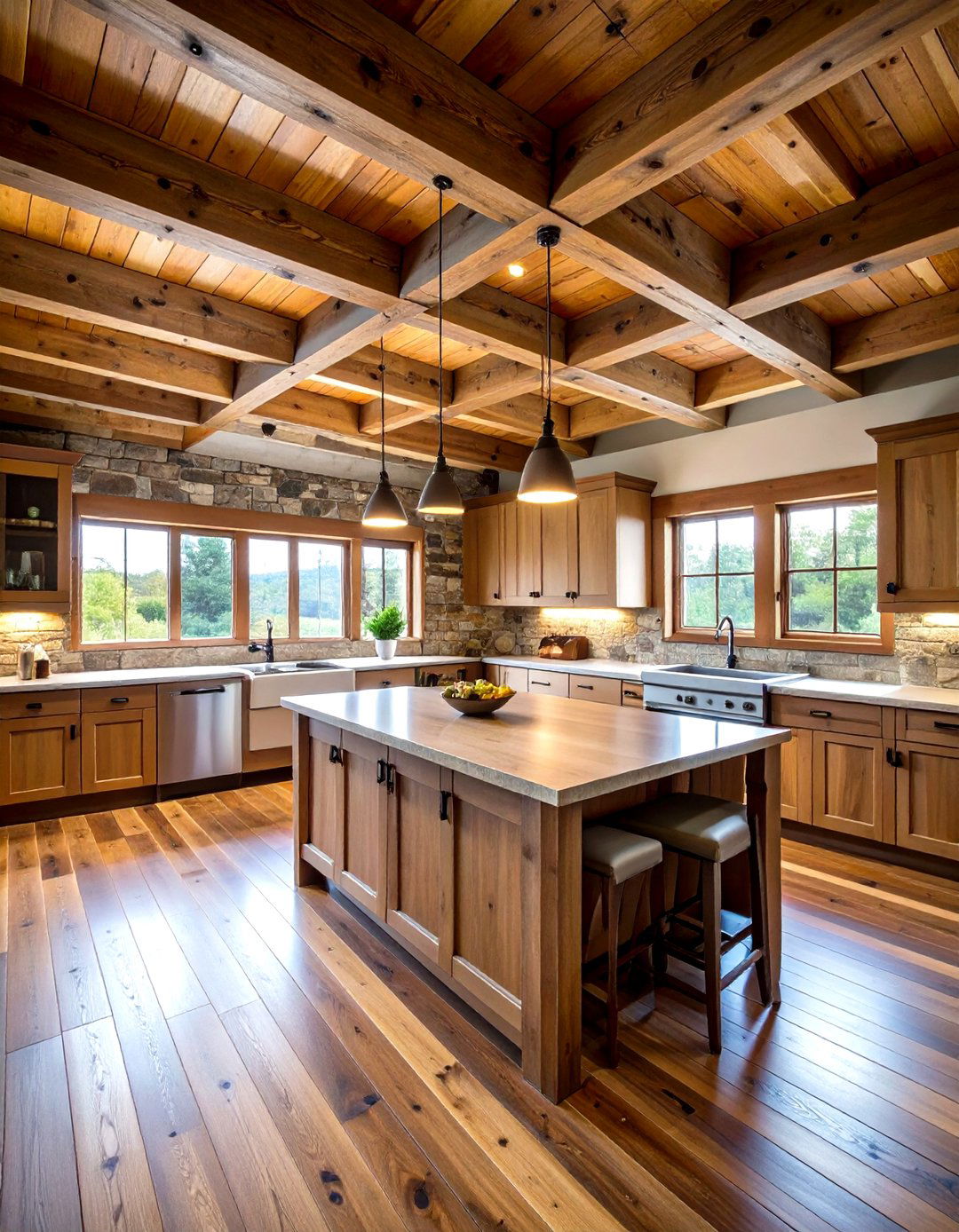
Exposed wood beams add authentic character and warmth to basement ceilings, creating a natural focal point that brings organic texture. Rustic wood finishes work beautifully in basements that aim for earthy, mountain-style aesthetics, offering timeless appeal that complements various decor approaches. The installation of exposed wood beams adds dramatic effect to basement entertainment rooms, creating visual interest that draws the eye upward. You can choose authentic reclaimed lumber for genuine character or lightweight faux beams for easier installation. Faux wood beams can be added as a distinct remodeling feature because they're lightweight and require no additional structural support. Stain or paint them to match your design vision, or leave them natural for authentic rustic charm. This approach pairs beautifully with stone accents and creates cozy, cabin-like atmospheres.
4. LED Strip Basement Ceiling Lighting

Strategic LED strip integration transforms exposed basement ceilings into dynamic lighting showcases that enhance both function and atmosphere. LED strip lights can be tucked into joist spaces or strategically suspended in multiple places, creating customizable ambient lighting that works perfectly for entertainment or relaxation. LED strip lighting adds subtle illumination without requiring large light fixtures, making them ideal for basements with height restrictions. In basements, LED strip lighting fits perfectly in home cinema or entertainment rooms that need to be dark and cozy. Install them along beam edges, within recessed areas, or behind soffits to create dramatic uplighting effects. The versatility allows you to adjust color temperature and brightness for different activities, from bright task lighting to soft mood illumination for movie nights.
5. Metallic Silver Basement Ceiling Finish
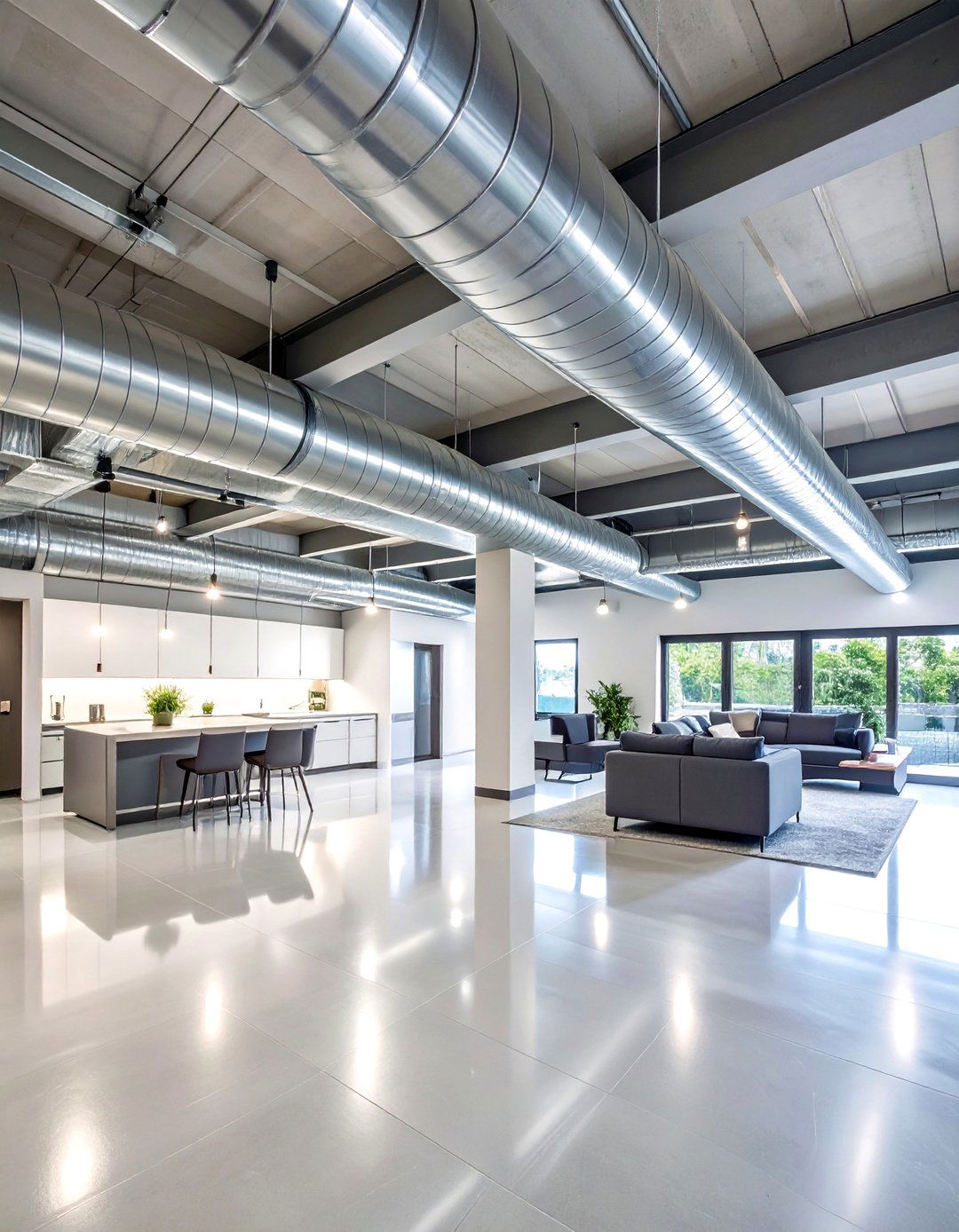
A metallic silver finish adds modern industrial vibes to exposed basement ceilings, perfect for contemporary aesthetics. Silver-painted beams and pipes catch light beautifully, creating sleek, polished looks that work exceptionally well in game rooms or home theaters. Metallic paint covers pipes and ductwork to show them off, creating a factory-industrial feel. This sophisticated approach reflects light throughout the space, making it feel brighter while adding visual depth and texture. The reflective surfaces enhance ambient lighting and create interesting shadow play throughout the day. Clean ceiling elements thoroughly and sand rough spots before applying primer and metallic paint for even coverage. Pair with industrial-style lighting fixtures and modern furnishings to complete the urban loft aesthetic that makes basements feel like high-end commercial spaces.
6. Partial Basement Ceiling Soffits
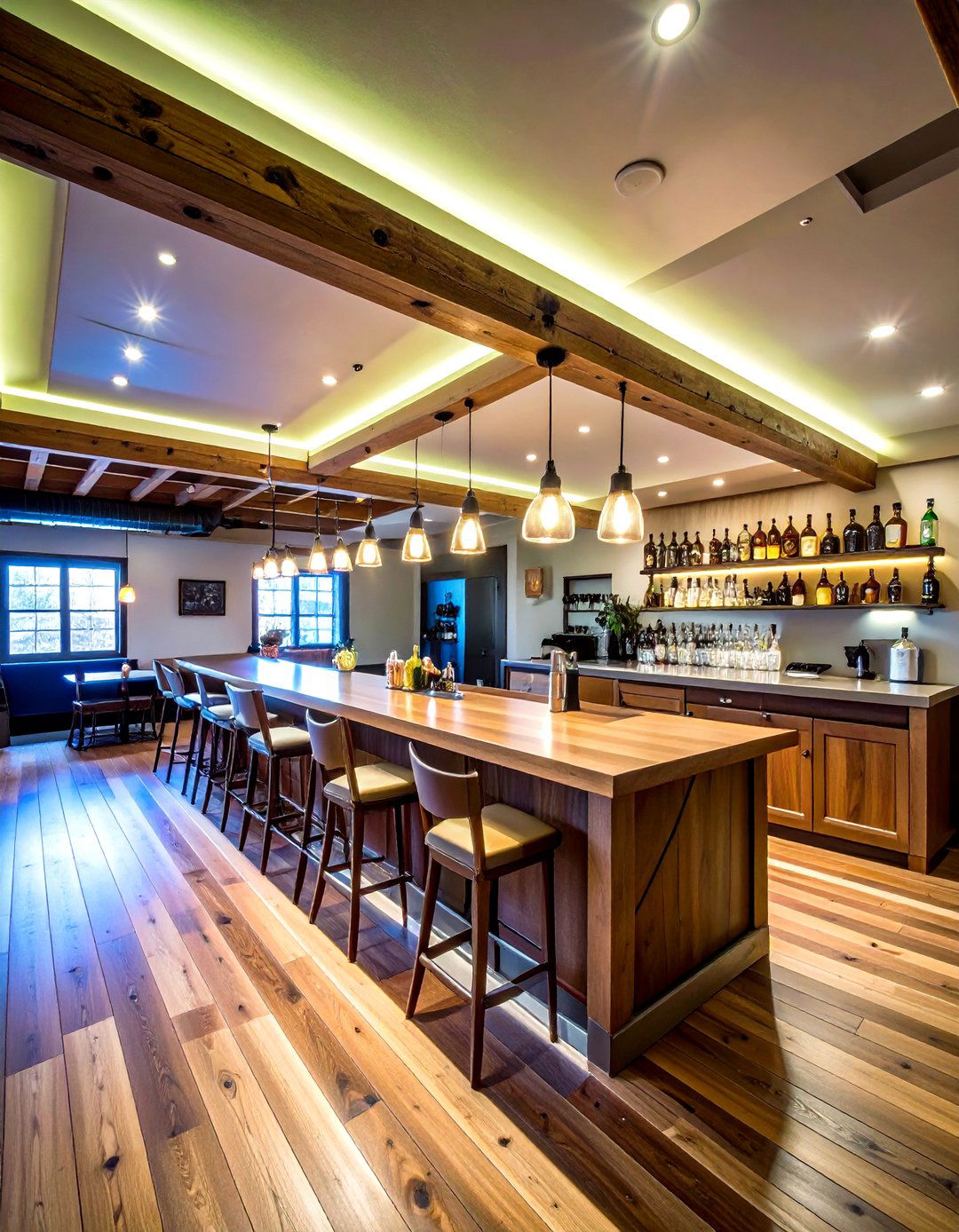
Intentionally designed dropped soffits that define spaces create architectural interest while hiding ductwork. Building finished soffits to hide offending mechanicals can appear as partially finished basement and pair well with other exposed ceiling styles. This strategic approach allows you to conceal unsightly elements while maintaining the open feel of exposed ceilings in key areas. Dropped soffits above basement bars and throughout rooms provide architectural interest while simultaneously hiding dropped ductwork. Use them to create visual zones that separate different functional areas like bars, seating areas, or game spaces. The contrast between finished soffits and exposed areas adds sophisticated layering to your design. Install LED lighting within soffits for dramatic indirect illumination that enhances the architectural details and creates compelling visual interest throughout your basement.
7. Multi-Color Creative Basement Ceiling
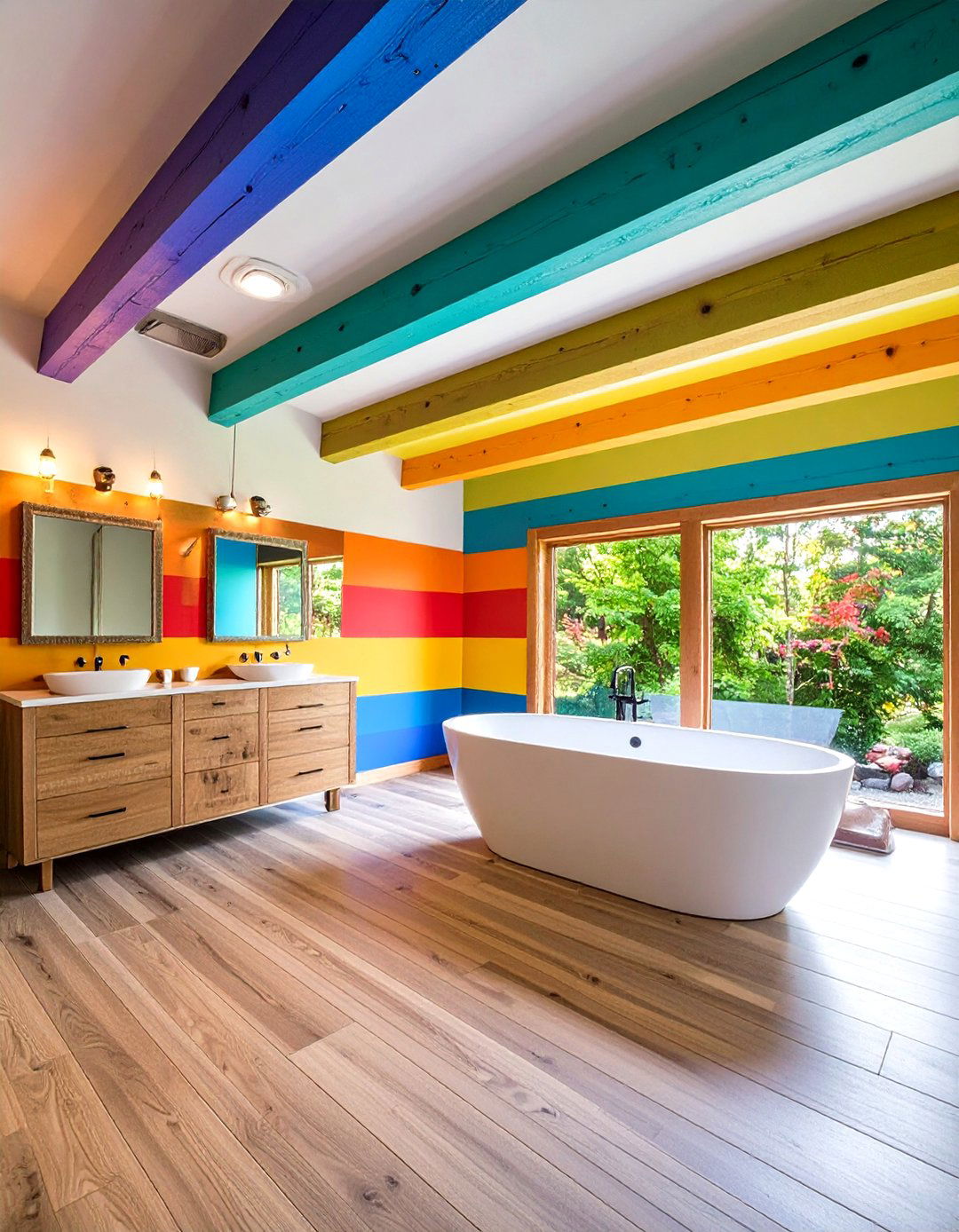
Consider painting your exposed basement ceiling in a multi-color scheme for fun, eclectic spaces. This approach is perfect for creative spaces like art studios or playrooms, adding vibrancy and energy. Use joist spaces as shadow boxes by painting each surface slightly different accenting colors, or add bold color to children's play spaces. The creative possibilities are endless when you embrace color as a design tool. Using contrasting or complementary colors can define different areas within the space, helping organize large basements into distinct functional zones. Bright, vibrant colors enhance lighting and make rooms feel lively. This playful approach works wonderfully in family spaces, workshops, or any area where creativity and energy are desired. Paint pipes and ducts in coordinating colors to create cohesive, imaginative environments.
8. Natural Wood Stain Basement Ceiling
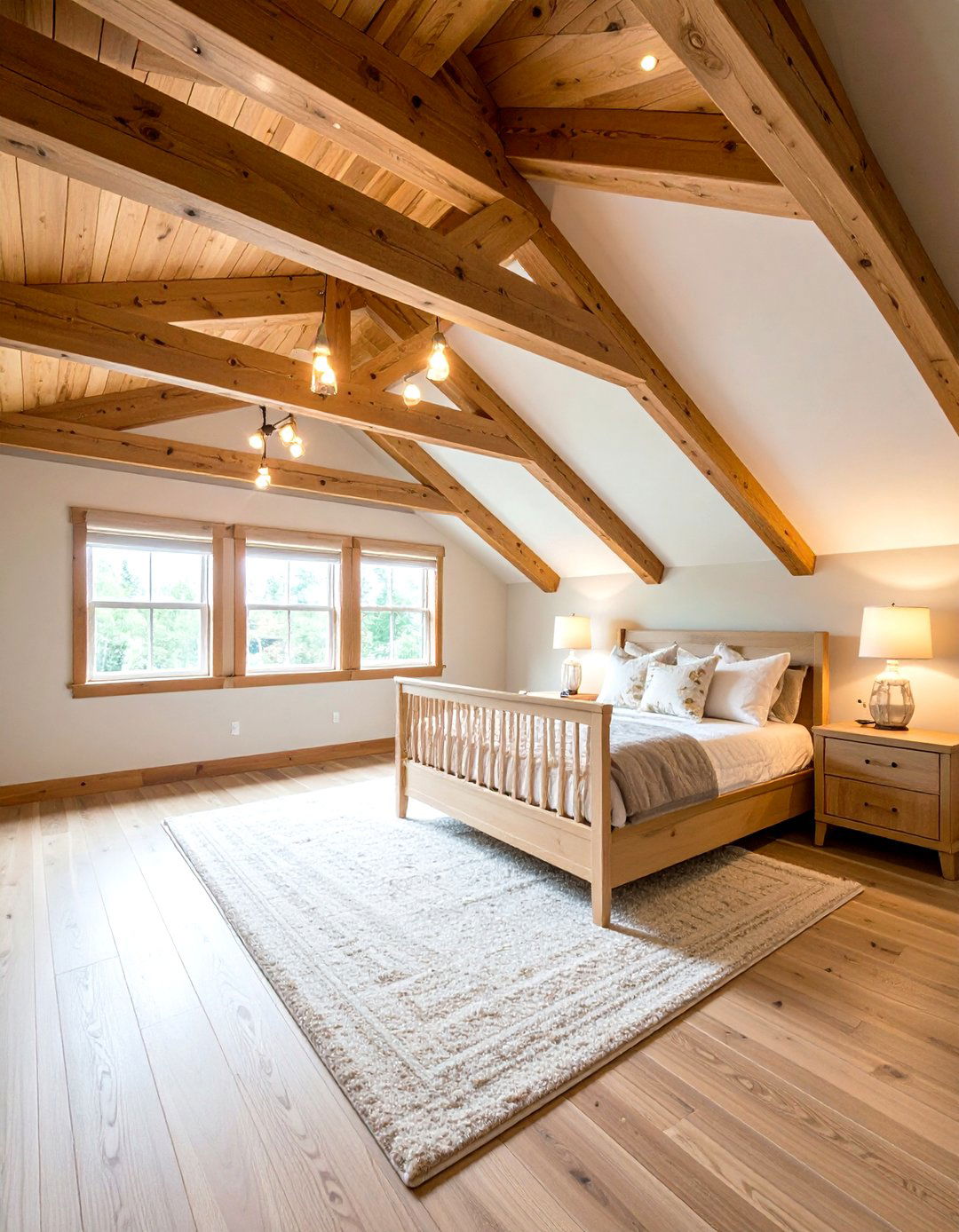
A natural wood finish creates warm, organic looks in basement ceilings by highlighting wood's natural grain and texture. Leaving beams and panels in their raw, unpainted state works beautifully in basements aiming for rustic or earthy aesthetics. When exposed basement ceilings look like they work hard and have scars to prove it, spend time cleaning rough spots and consider staining wooden surfaces. The exposed wood complements various decor styles, from modern farmhouse to industrial chic. Choose rich walnut stains for dramatic warmth or lighter honey tones for bright, airy feels. Pair natural wood ceilings with soft lighting and neutral furnishings to enhance cozy, inviting atmospheres. This approach works particularly well in family rooms, reading nooks, or spaces where you want to emphasize natural beauty and comfort.
9. Gray Monochrome Basement Ceiling Treatment

Sophisticated gray paint creates calming, balanced basement ceiling designs that work with various color schemes. Gray adds depth and beauty to rooms while maintaining open feels, making it perfect for modern or minimalist basement designs. This idea works well for media rooms, home gyms, or minimalist living spaces, offering clean yet modern touches. The neutral tone provides sophisticated backdrop that doesn't compete with furnishings or artwork while maintaining visual interest through texture and form. Painting basement ceilings the same color as walls creates moody, dramatic spaces that make rooms feel larger. Use matte gray paint across exposed beams and pipes, applying primer first for even coverage. This versatile choice bridges traditional and contemporary styles while creating cohesive, calming environments perfect for relaxation or focused activities.
10. HVAC Feature Integration Basement Ceiling

Rather than hiding HVAC systems, make them design features by accentuating them with metallic paint or eye-catching materials. Old industrial buildings often unknowingly add character by leaving HVAC ductwork exposed and operational. You can recreate that look by replacing old boxy-shaped ductwork with clean, new round ducts and industrial-looking grilles. The metallic finish reflects light, adding brightness and sparkle while creating modern, industrial looks. This approach transforms necessary mechanical systems into intentional design elements that add character and authenticity. Paint ductwork in coordinating colors or leave metal surfaces natural for authentic industrial appeal. This approach adds unique flair to basements and makes maintenance more accessible. The key is treating utilities as architectural features rather than eyesores.
11. Reclaimed Wood Panel Basement Ceiling
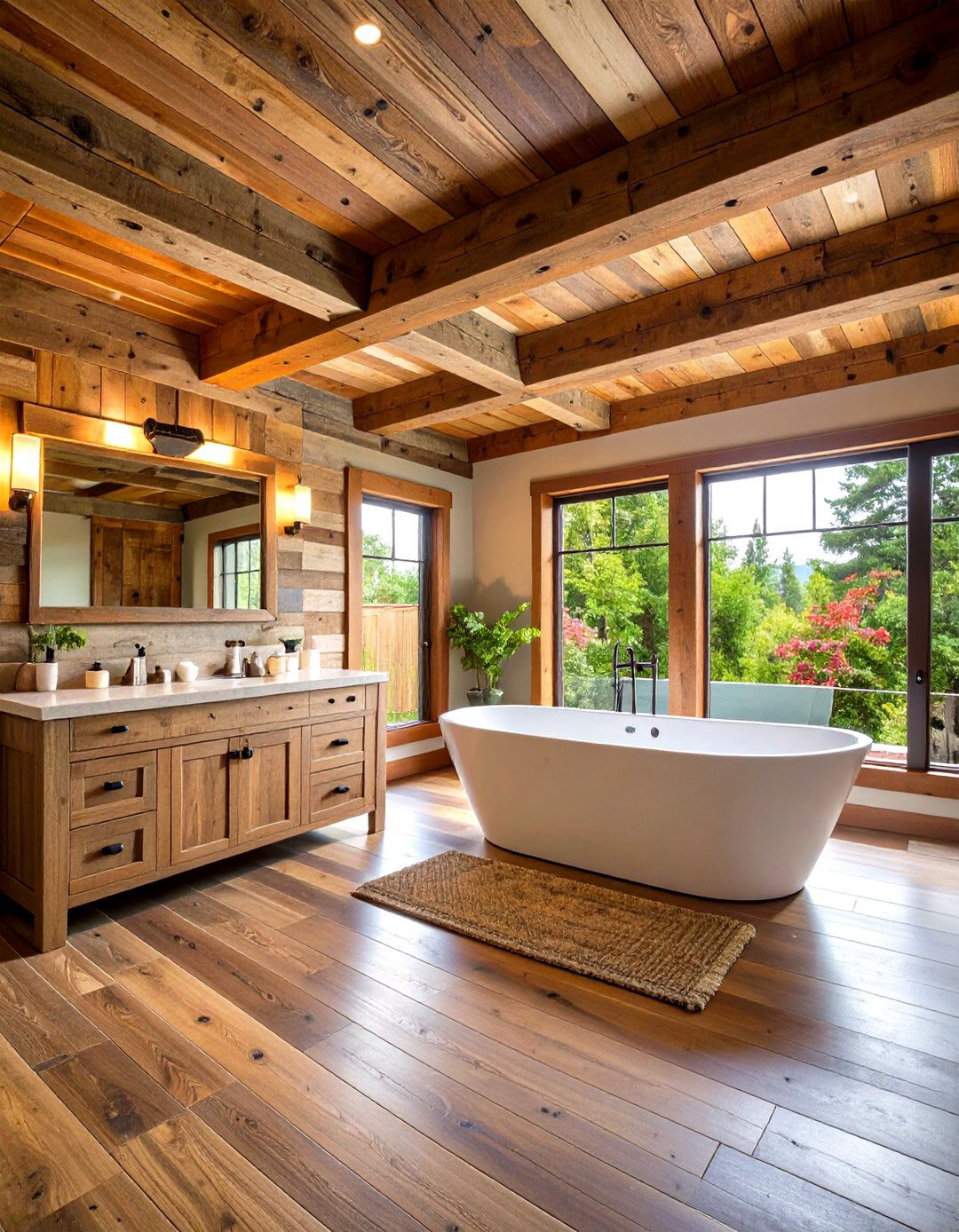
Reclaimed wood is a sustainable option that adds character to basement ceilings, with weathered effects bringing authentic vintage charm. Old wood panels and weathered textures make ceilings stand out while creating comfortable, inviting atmospheres. Reclaimed wood brings its own story to each addition, with natural history adding unique character. Install panels between beams for partial coverage or across entire ceiling areas for dramatic impact. The varied patina and natural imperfections create visual interest that can't be replicated with new materials. Cover whole ceilings with these panels, or use them sparingly to create rustic basement accents. This sustainable approach appeals to environmentally conscious homeowners while delivering exceptional visual warmth. Pair with industrial lighting fixtures and natural stone elements to create sophisticated rustic environments that feel both authentic and intentionally designed.
12. Pendant Lighting Zone Basement Ceiling
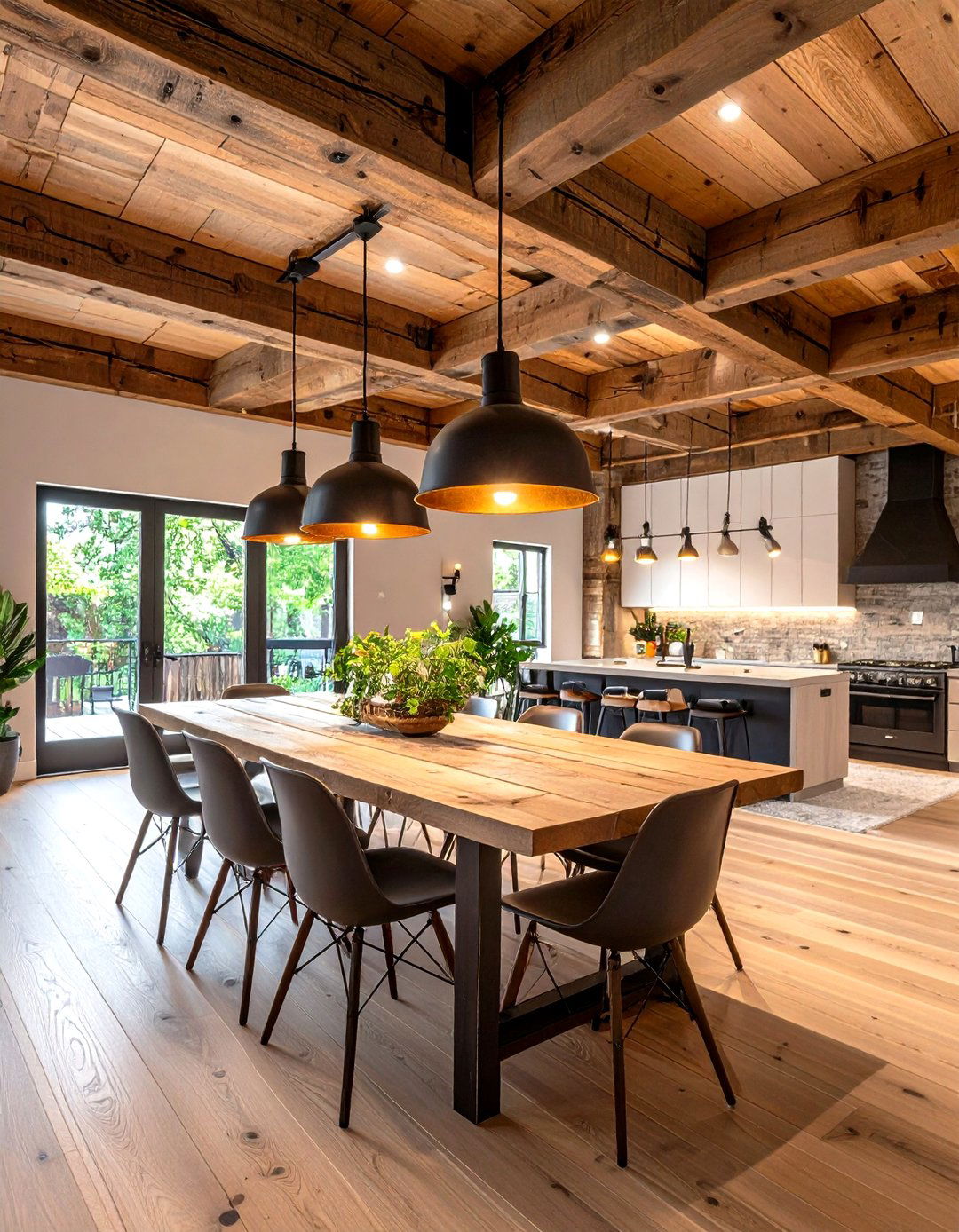
Choose pendant light fixtures that hang down, ensuring light is evenly distributed rather than positioned higher between beams. Industrial-look pendant lights match the aesthetic of open basement ceilings perfectly, creating focused illumination zones for different activities. Because they hang down, pendant lights tend to take up too much space in basements with low ceilings, so look for adjustable cord lengths. Strategic placement creates intimate lighting areas over bars, game tables, or seating zones while maintaining the open ceiling aesthetic. Uniform spacing throughout the space with careful measurement ensures they line up nicely. Use multiple pendants to define different functional areas within large basement spaces. This approach combines practical task lighting with decorative appeal, making exposed ceilings feel intentional and well-planned rather than simply unfinished.
13. Concrete Texture Emphasis Basement Ceiling
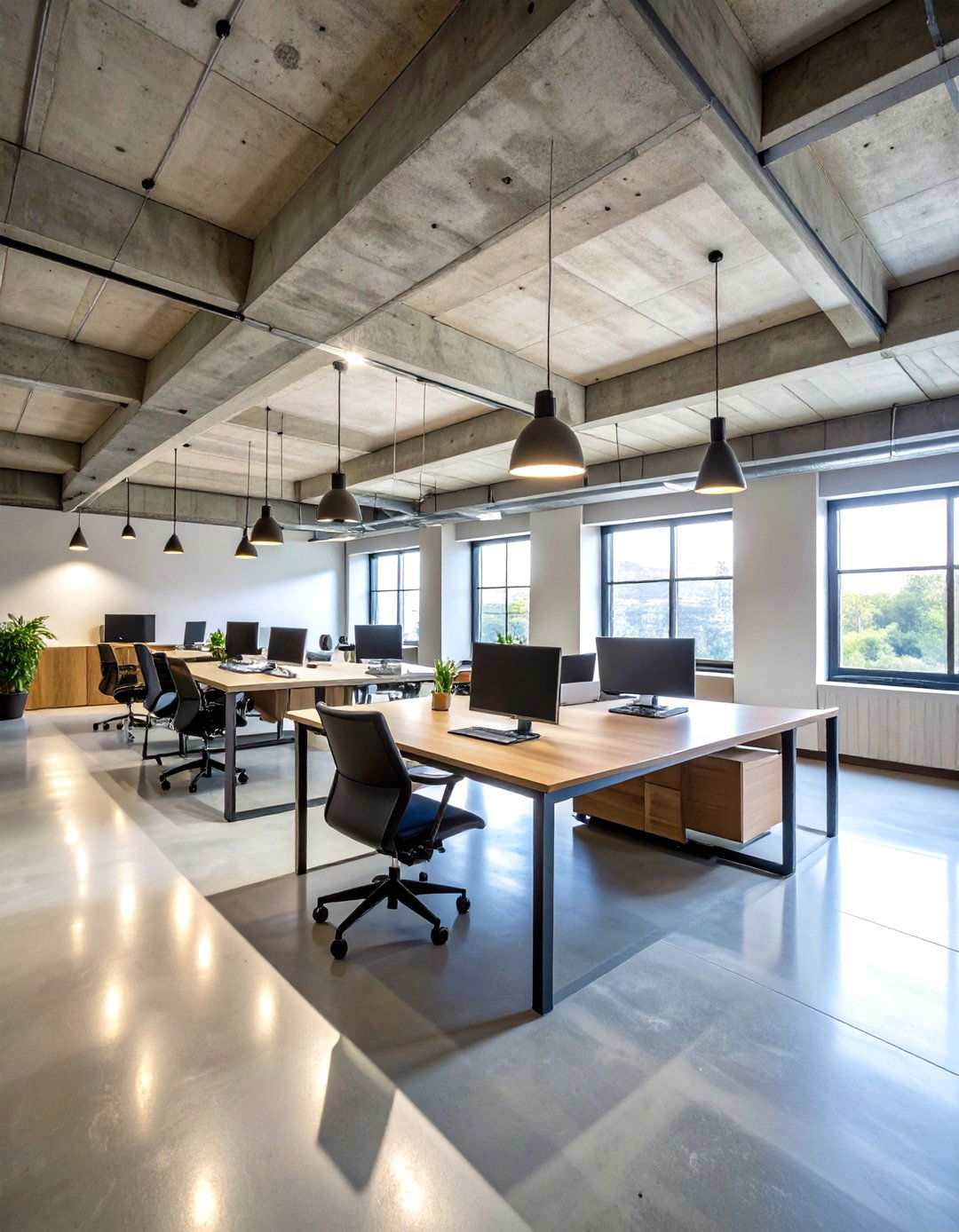
An exposed concrete ceiling delivers minimalist, urban-inspired aesthetics perfect for raw, industrial looks. Bare concrete adds texture and character to spaces, making them feel modern and edgy. Concrete basement floors paired with exposed ceiling structures create authentic industrial character. This approach works exceptionally well when combined with steel furniture, brick walls, or other industrial elements. Add warm lighting or plush furnishings to soften the look, creating balance between rugged and cozy. The natural variations in concrete create subtle visual interest while maintaining clean, minimalist appeal. Use masonry paint on concrete surfaces for better adhesion and stain resistance. This bold choice appeals to homeowners seeking contemporary, urban loft aesthetics that feel sophisticated and intentionally modern.
14. Wood Slat Installation Basement Ceiling
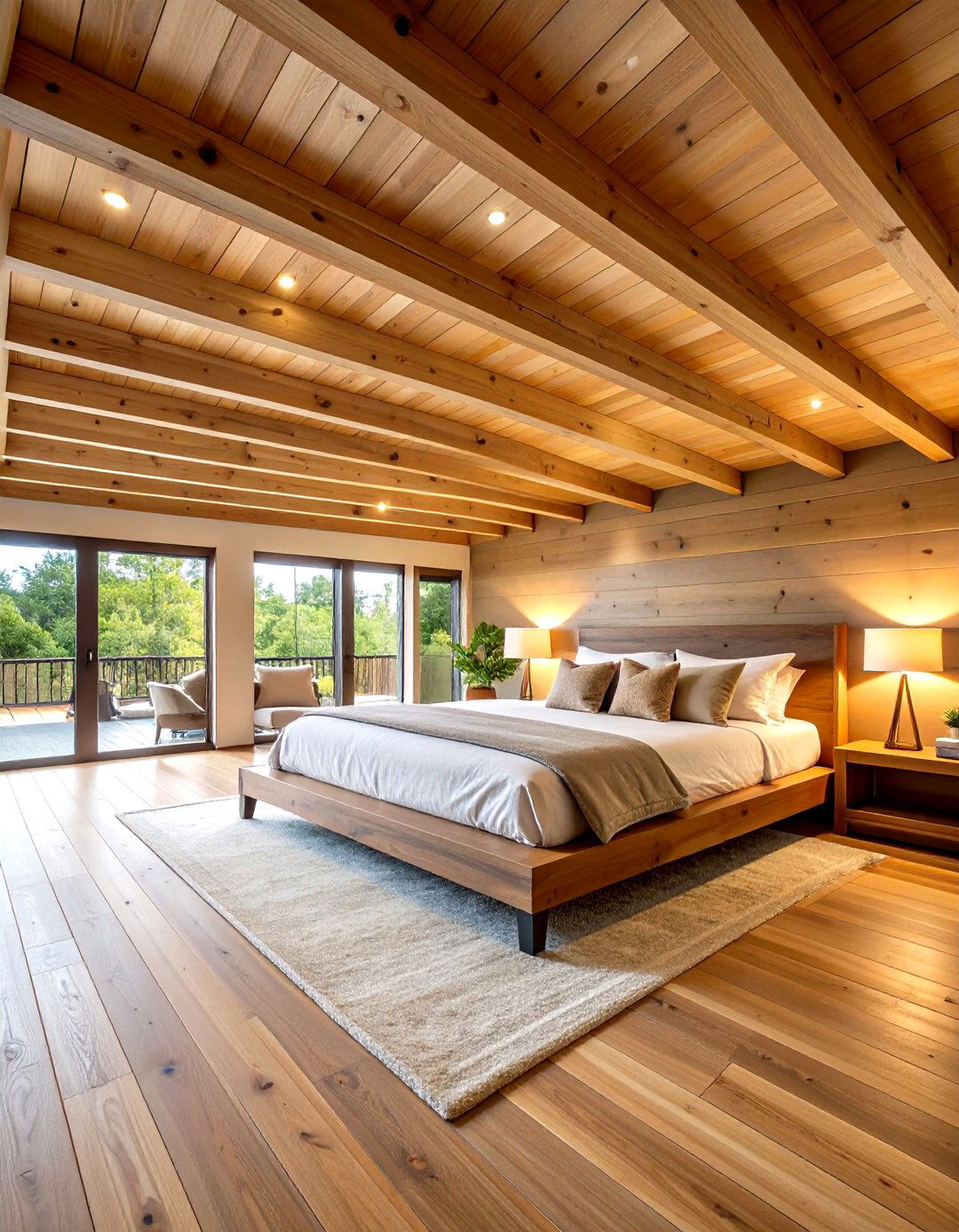
Use 1-by-2, 1-by-3, or combinations of sizes to create surfaces of evenly spaced slats across exposed basement ceilings. Wood plank ceilings add warmth and modern architectural detail while concealing rafters and wiring. Stain or paint them for added aesthetics, creating patterns or designs matching your personality. This versatile approach allows partial coverage while maintaining access to utilities when needed. If you need to access something in the ceiling, simply unscrew a couple of boards. The linear patterns create visual rhythm and interest while adding natural warmth to basement spaces. For different looks, stain or paint slats before installation. This technique works beautifully for creating modern farmhouse aesthetics or contemporary linear designs that add sophistication without completely enclosing the ceiling space.
15. Strategic Accent Section Basement Ceiling
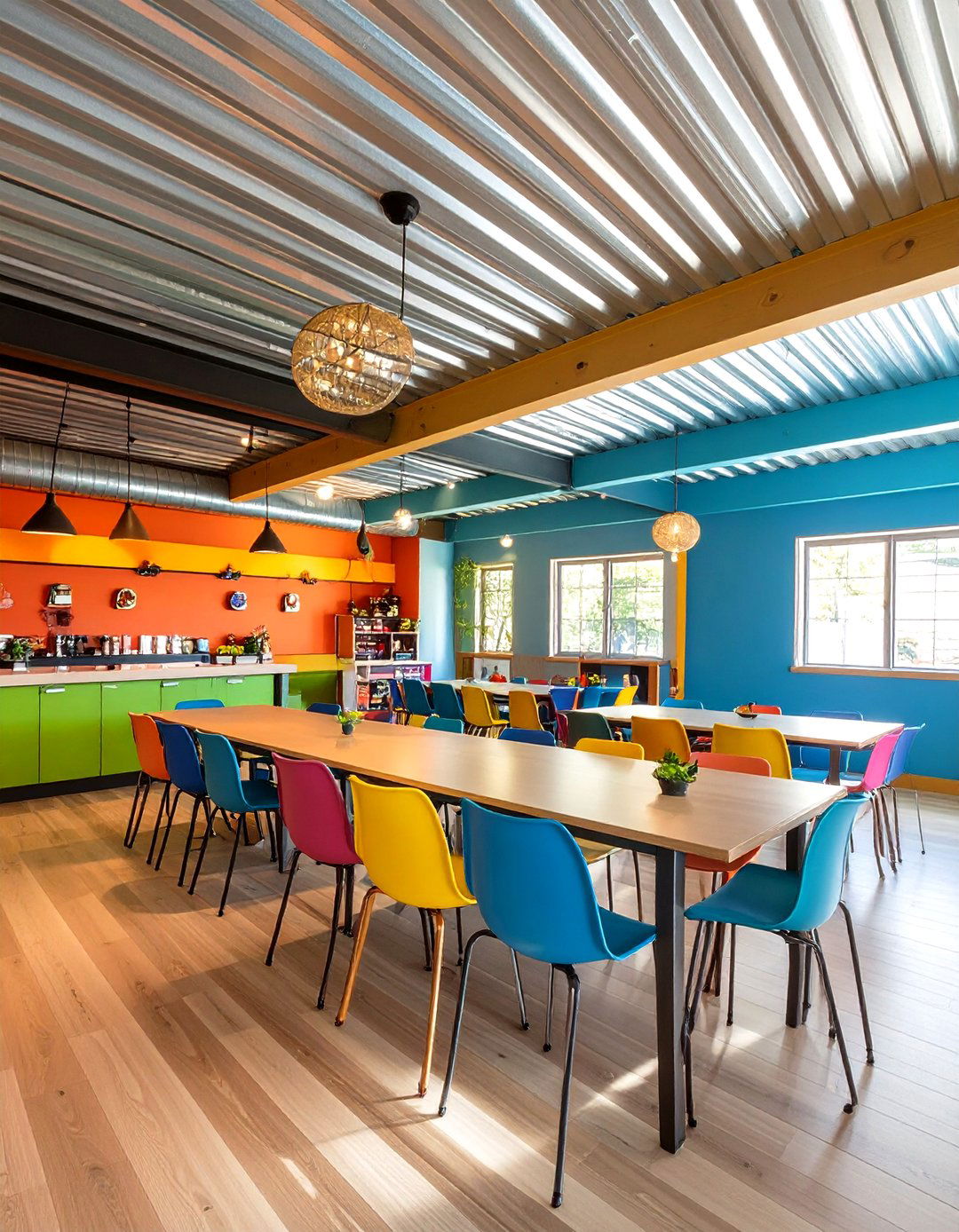
An exposed basement ceiling allows you to accentuate precisely the parts you want to show off. Consider wooden, corrugated steel, or tin tile ceiling over bars or entertainment areas to highlight those portions while the rest retains its big-size feel. This approach creates visual hierarchy and functional zoning within large basement spaces. Leave other surfaces alone, or add paint coats while finishing small ceiling parts. Focus finished treatments on key areas like bars, entertainment centers, or seating zones while maintaining open ceilings elsewhere. The contrast between finished and exposed sections adds architectural interest and helps define different activity areas. This selective approach maximizes impact while controlling costs and maintaining the spacious feel that makes exposed ceilings appealing. Strategic accent sections become focal points that draw attention and create memorable design moments.
16. Industrial Pipe Showcase Basement Ceiling
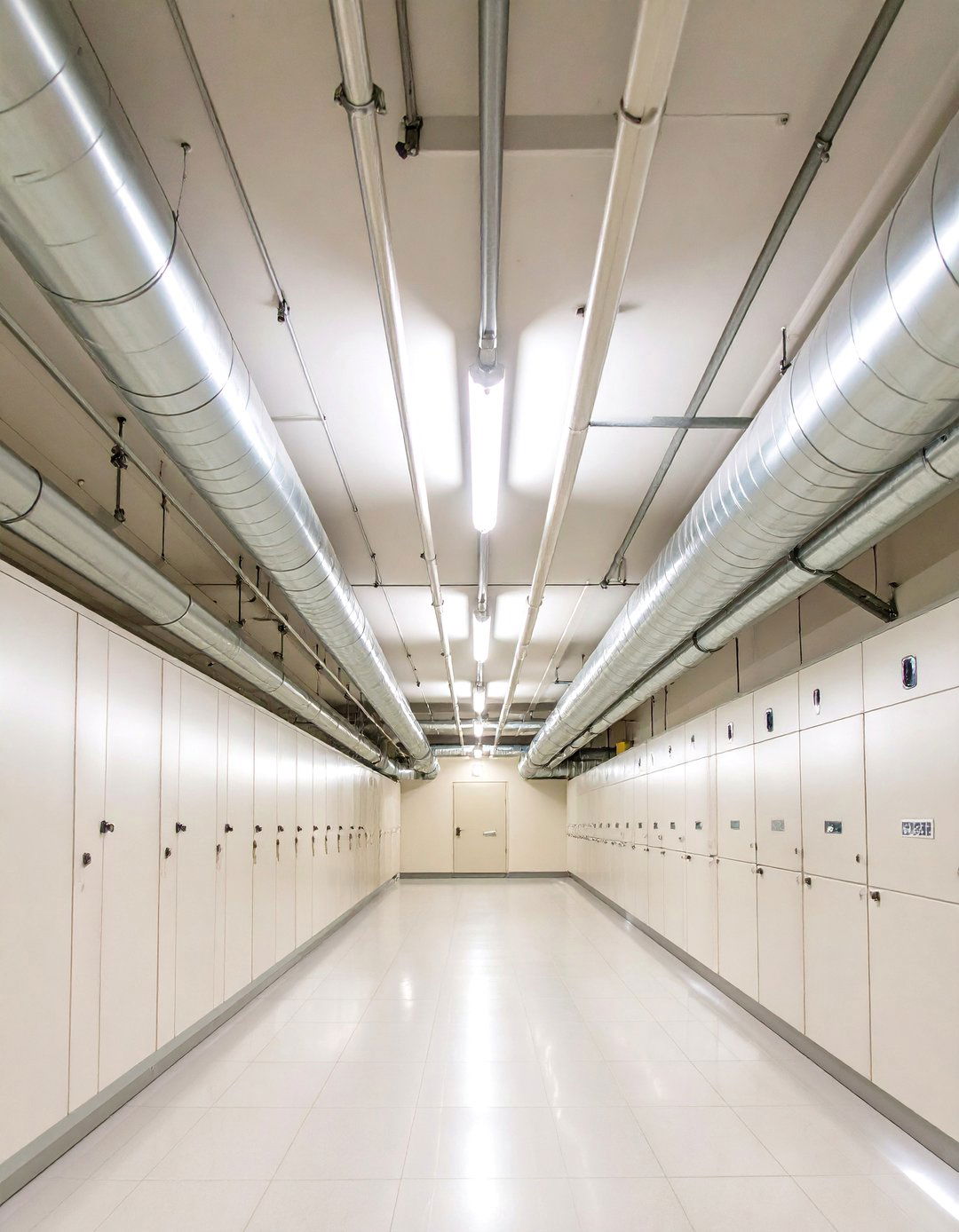
Instead of hiding pipes, make them design features by painting them in light colors that allow pipes to stand out as industrial elements. Exposed pipes in basements are becoming intentional highlight pieces that appreciate factory charms. Light colors enhance visibility of pipes, adding visual interest while turning functional elements into design features. This approach gives modern feels to rustic styles, creating dynamic textures that contribute to feelings of vitality. Paint pipes in coordinating colors or metallic finishes to create cohesive design schemes. This adds industrial character while maintaining authenticity to the space's mechanical nature. The key is treating plumbing and utilities as architectural elements rather than hiding them. This honest approach to basement design celebrates the building's infrastructure while creating visually compelling environments that feel authentic and intentionally industrial.
17. Acoustic Panel Combination Basement Ceiling
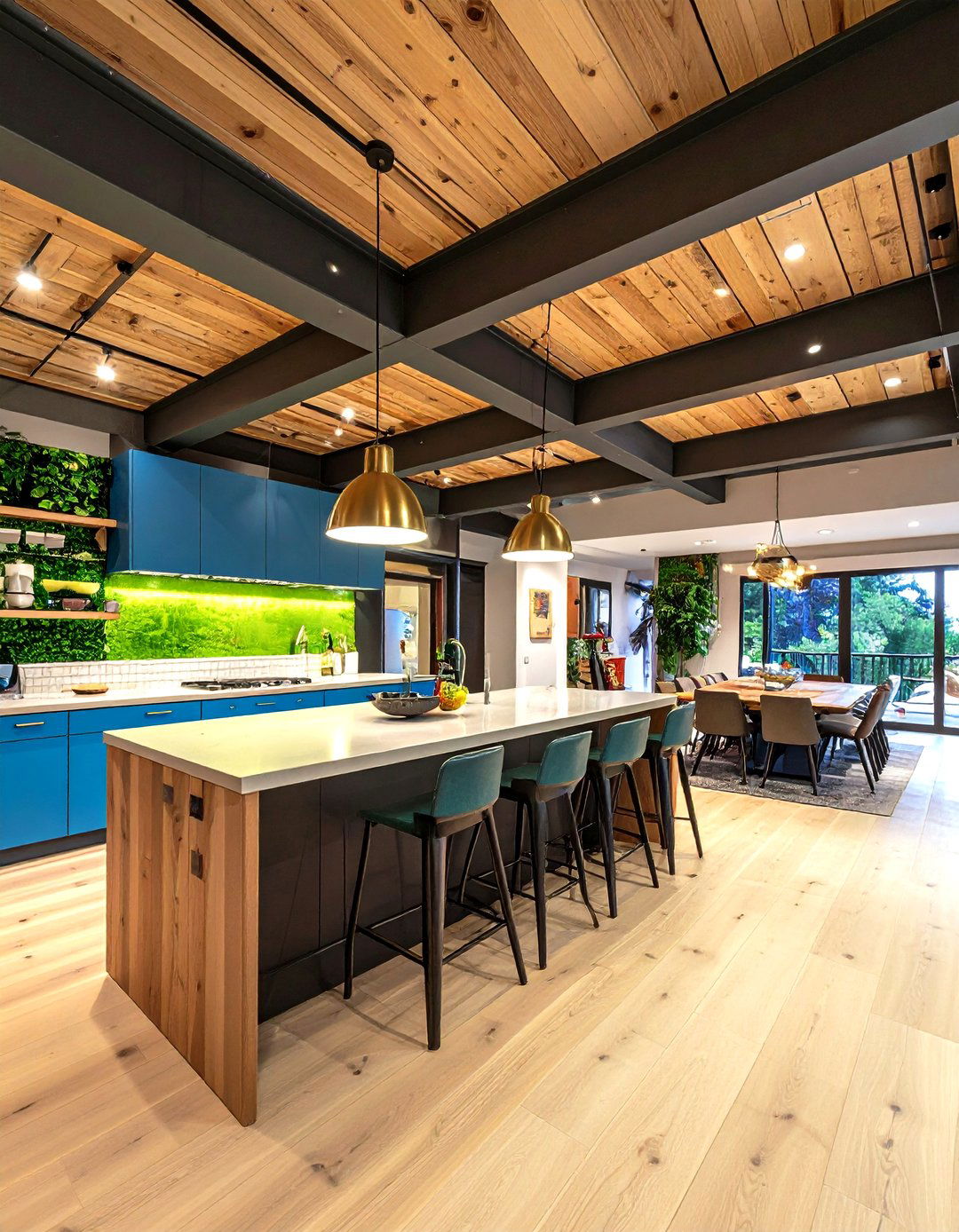
Thoughtful integration of acoustic panels with exposed basement ceiling elements creates sound control without sacrificing the open aesthetic. Ceiling tiles provide polished looks while maintaining easy access to wiring, plumbing, and HVAC vents concealed above. Strategic placement of sound-absorbing materials between beams or in specific zones helps control echo and noise transmission while preserving the industrial character. Tiles easily pop out when you need to access systems, making maintenance simple. This approach works particularly well in basement home theaters, music rooms, or multi-purpose spaces where sound quality matters. Choose acoustic materials that complement your overall design aesthetic, from sleek modern panels to textured natural materials. The combination allows you to enjoy both the visual appeal of exposed ceilings and the acoustic benefits of proper sound treatment for optimal basement functionality.
18. Dropped Soffit Zone Basement Ceiling

Strategically designed dropped soffits create architectural interest while hiding ductwork and defining different spaces. This sophisticated approach allows selective ceiling treatment that maintains open feels in main areas while providing finished touches where needed. These features help visually establish different zones in basement layouts, creating organization and flow within large spaces. Install soffits around perimeters, over bars, or along walls to frame and define activity areas. The variation in ceiling heights adds visual complexity and helps break up potentially overwhelming open spaces. Dropped soffits provide opportunities to hide mechanicals while simultaneously adding design elements. Include LED lighting within soffits for dramatic indirect illumination that enhances architectural details. This technique bridges fully exposed and fully finished approaches, offering sophisticated compromise solutions that maximize both aesthetics and functionality.
19. Mixed Material Approach Basement Ceiling
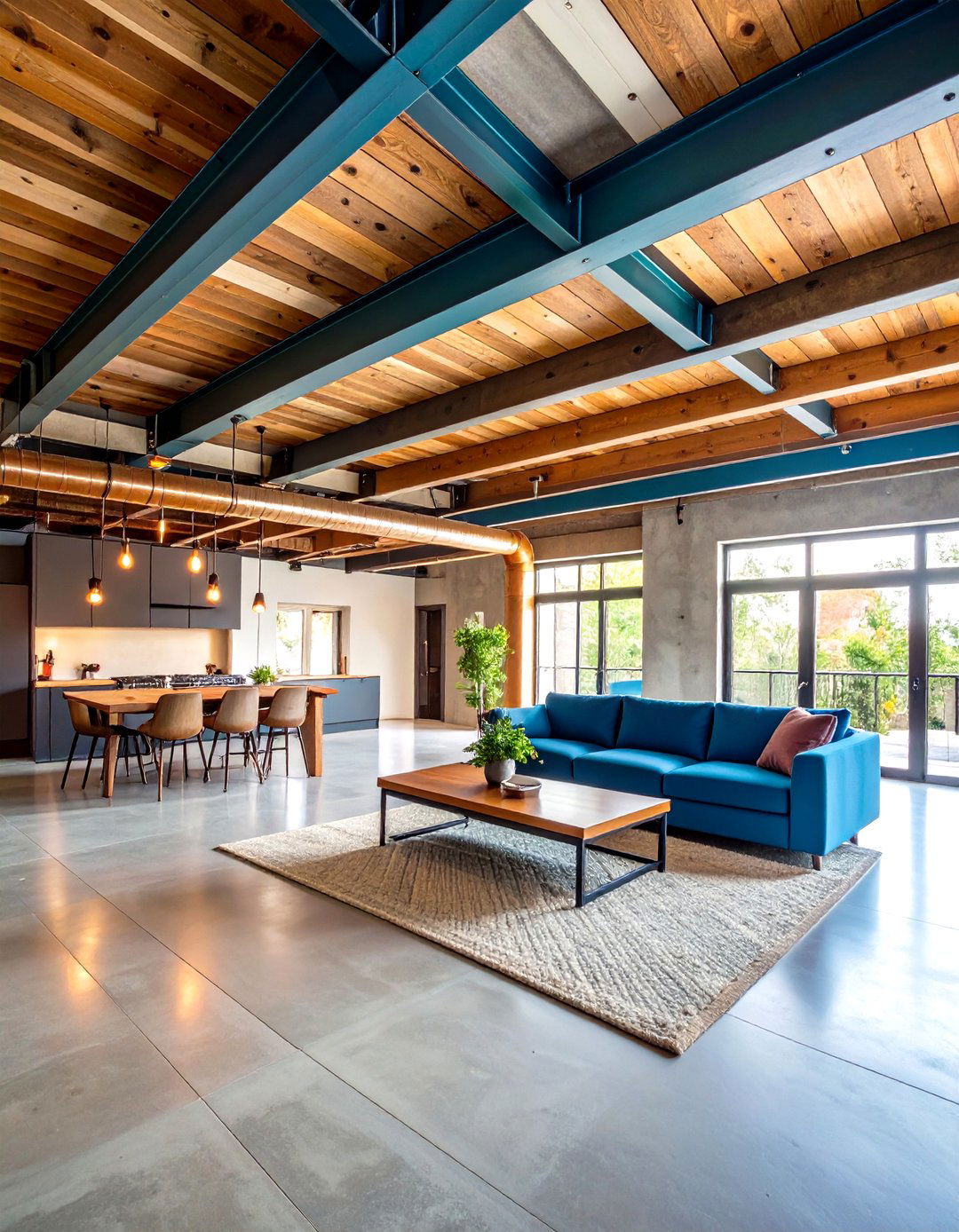
Combining different materials across exposed basement ceiling areas creates dynamic, layered designs that add visual complexity and interest. Pairing metallic finishes with natural wood elements creates compelling contrasts that enhance both materials. Use painted steel beams alongside natural wood planks, or combine concrete sections with reclaimed wood panels for authentic industrial character. Materials including charcoal stained concrete floors and exposed ceiling structures painted black, with copper elements as sparkling gems demonstrate how mixed materials create sophisticated layers. Strategic material placement helps define different functional zones while maintaining visual cohesion throughout the space. The key is choosing materials that complement rather than compete, creating intentional contrast that adds depth and personality. This approach allows maximum creative expression while celebrating the authentic architectural character that makes exposed basement ceilings so appealing to contemporary homeowners.
20. Minimalist Clean Exposure Basement Ceiling
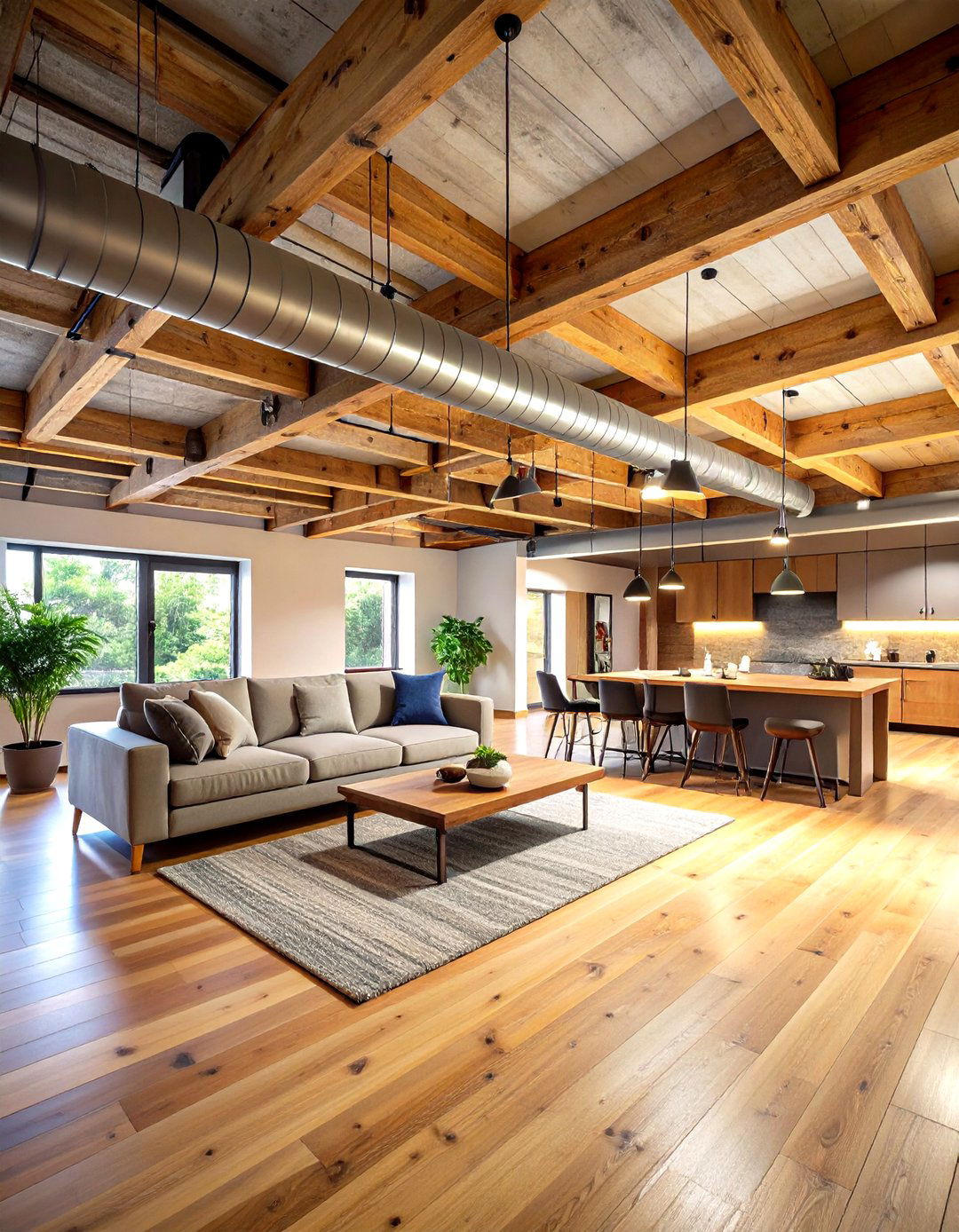
Sometimes the best approach is to leave exposed basement ceilings alone, dusting off cobwebs and focusing on other surfaces. Your exposed basement ceiling is unique to your home and should be shown off. This honest approach celebrates authentic architectural character without unnecessary intervention or expense. Adopt the raw, unfinished look by keeping ceilings in natural states, where exposed beams, ducts, and wires lend authentic industrial feels. The minimalist approach relies on good lighting and clean organization rather than added materials or finishes. Focus attention on furniture, artwork, and activities rather than overhead treatments. Just be sure no old lead paint exists on joists if you plan to use the space underneath. This confident choice works particularly well in modern or contemporary settings where authenticity and simplicity are valued over elaborate decoration.
Conclusion:
These exposed basement ceiling ideas demonstrate how to transform raw space into unique, inviting retreats that work with existing architectural elements. The beauty of exposed ceilings lies in their ability to maximize height, maintain utility access, and create distinctive character that reflects your personal style. Whether using reclaimed wood, exposing beams, or integrating metal panels, keeping designs authentic to your style is key. From industrial chic to cozy rustic, exposed ceilings can become standout features that turn functional elements into design highlights. The versatility of these approaches means every basement can achieve a custom look that enhances both function and aesthetics. With planning and effort, your exposed ceiling can be more than just a cost-saver – it can be a feature you're proud to show off. These solutions prove that working with your basement's existing architecture, rather than against it, creates the most compelling and authentic results for modern underground living spaces.


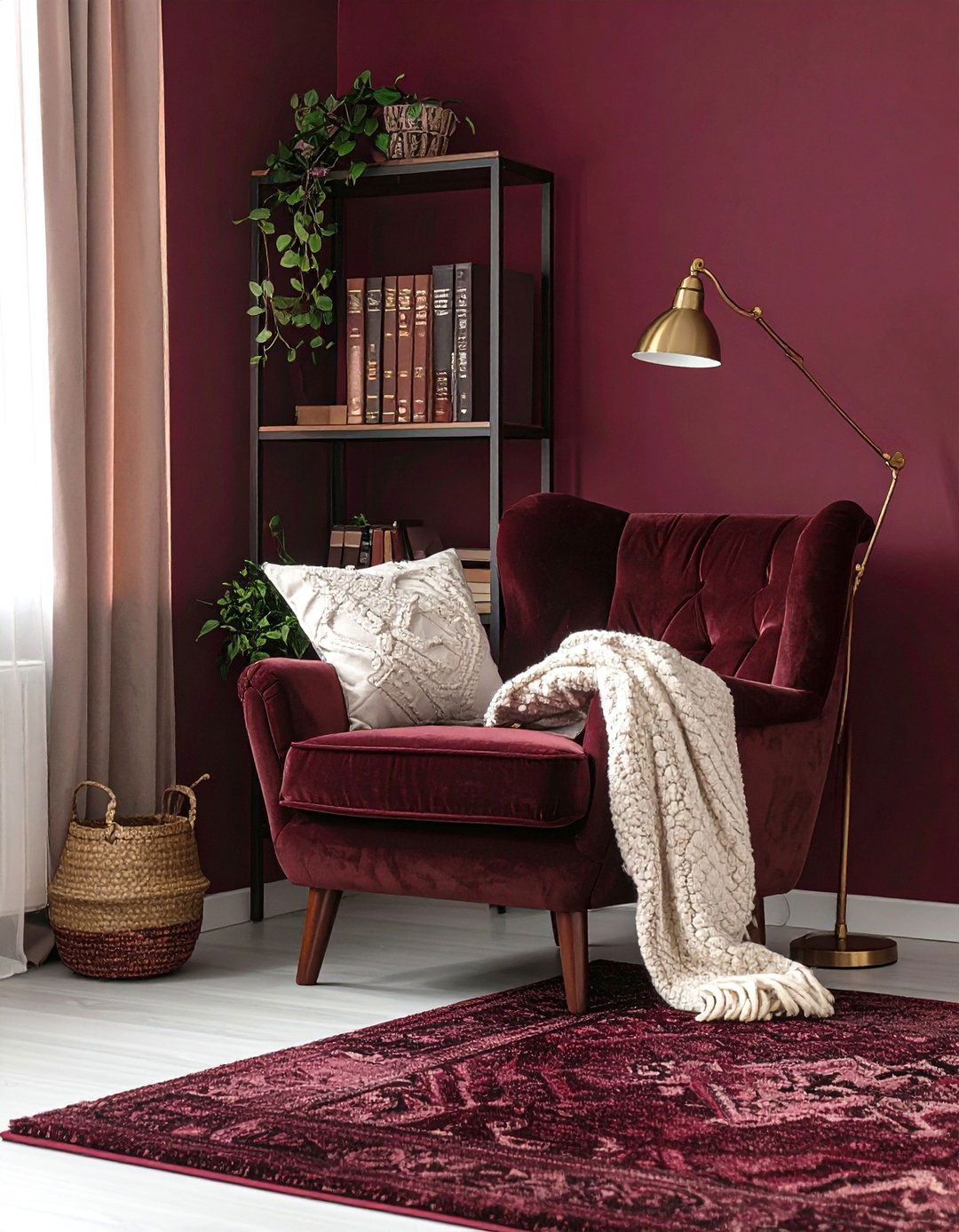
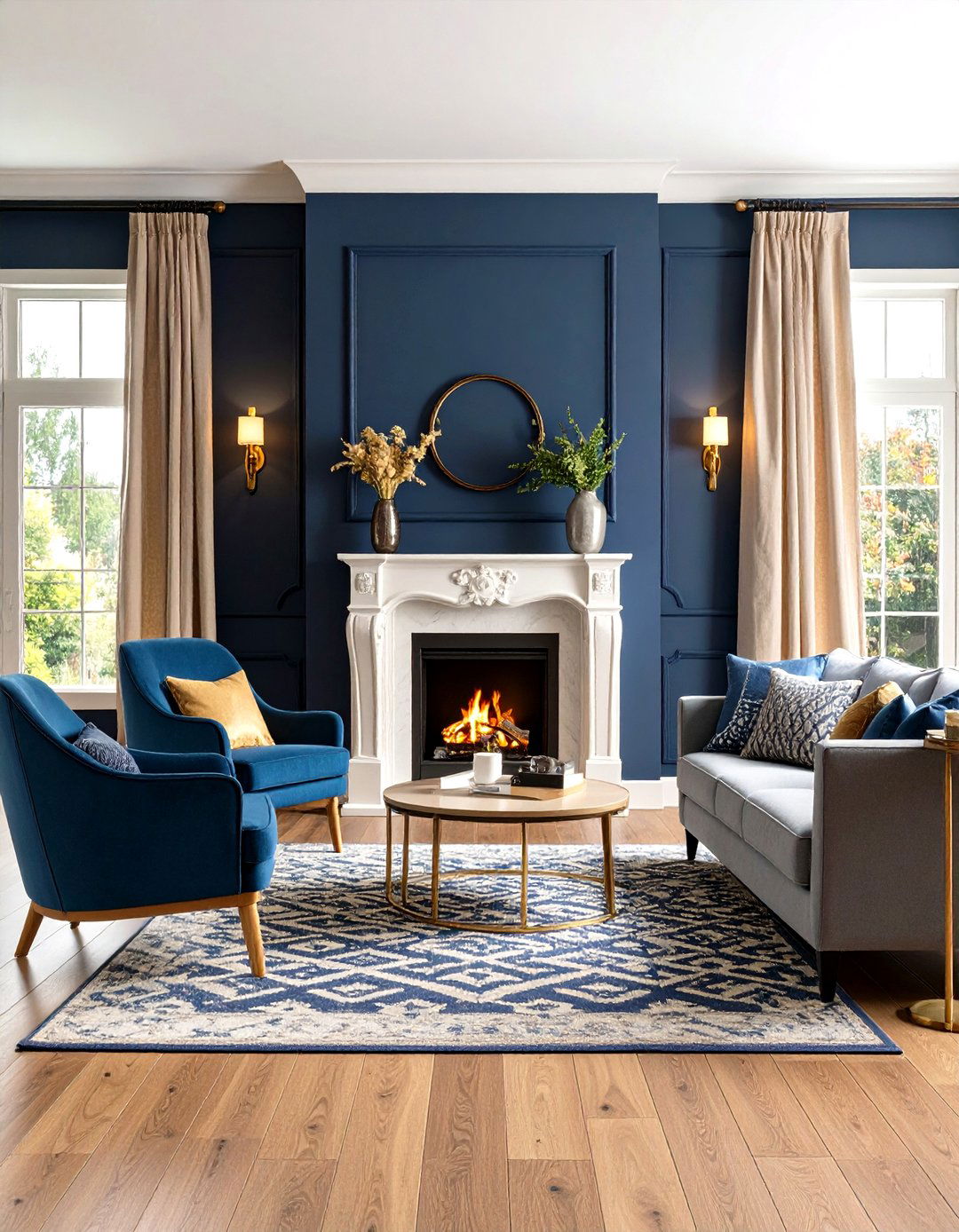

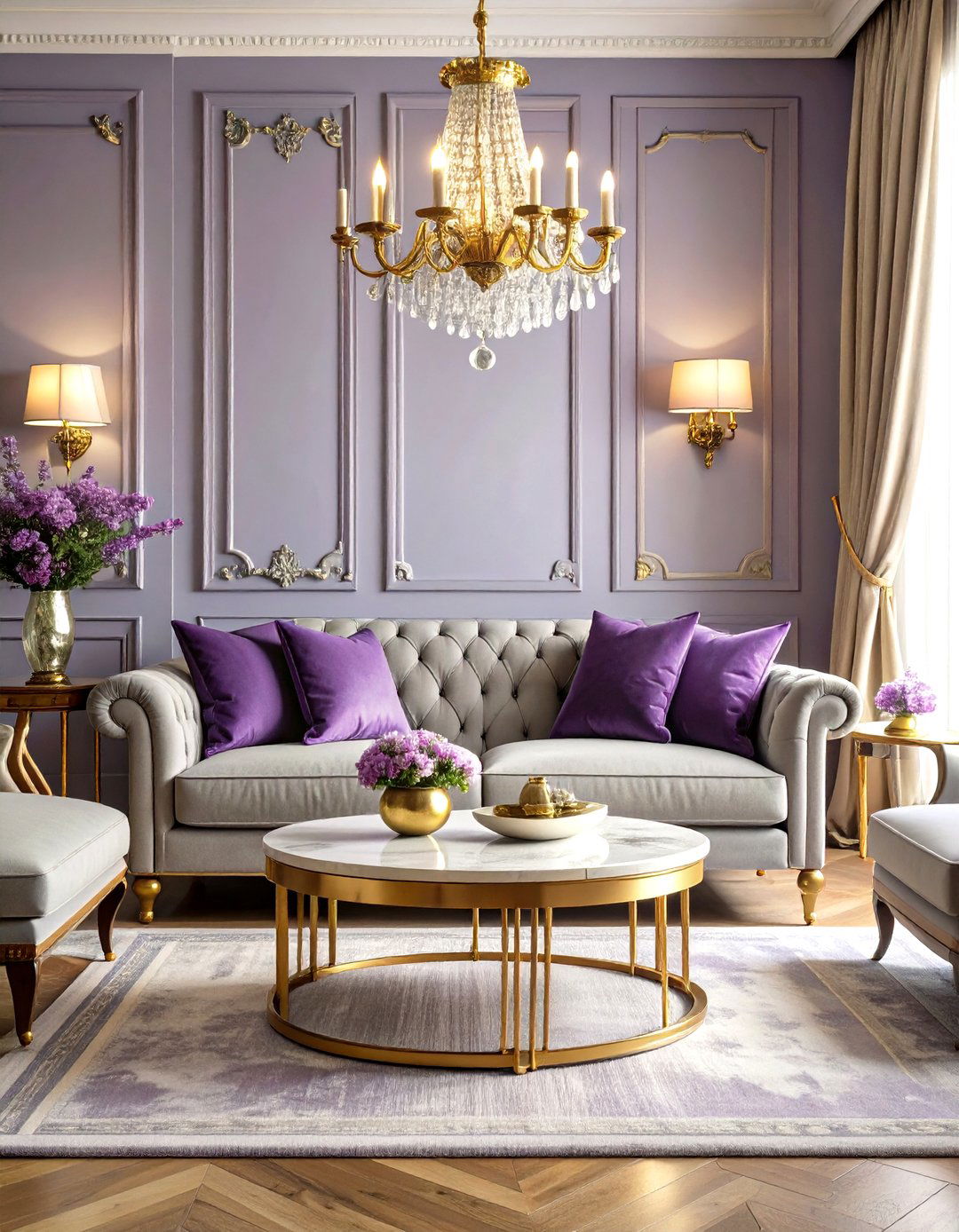
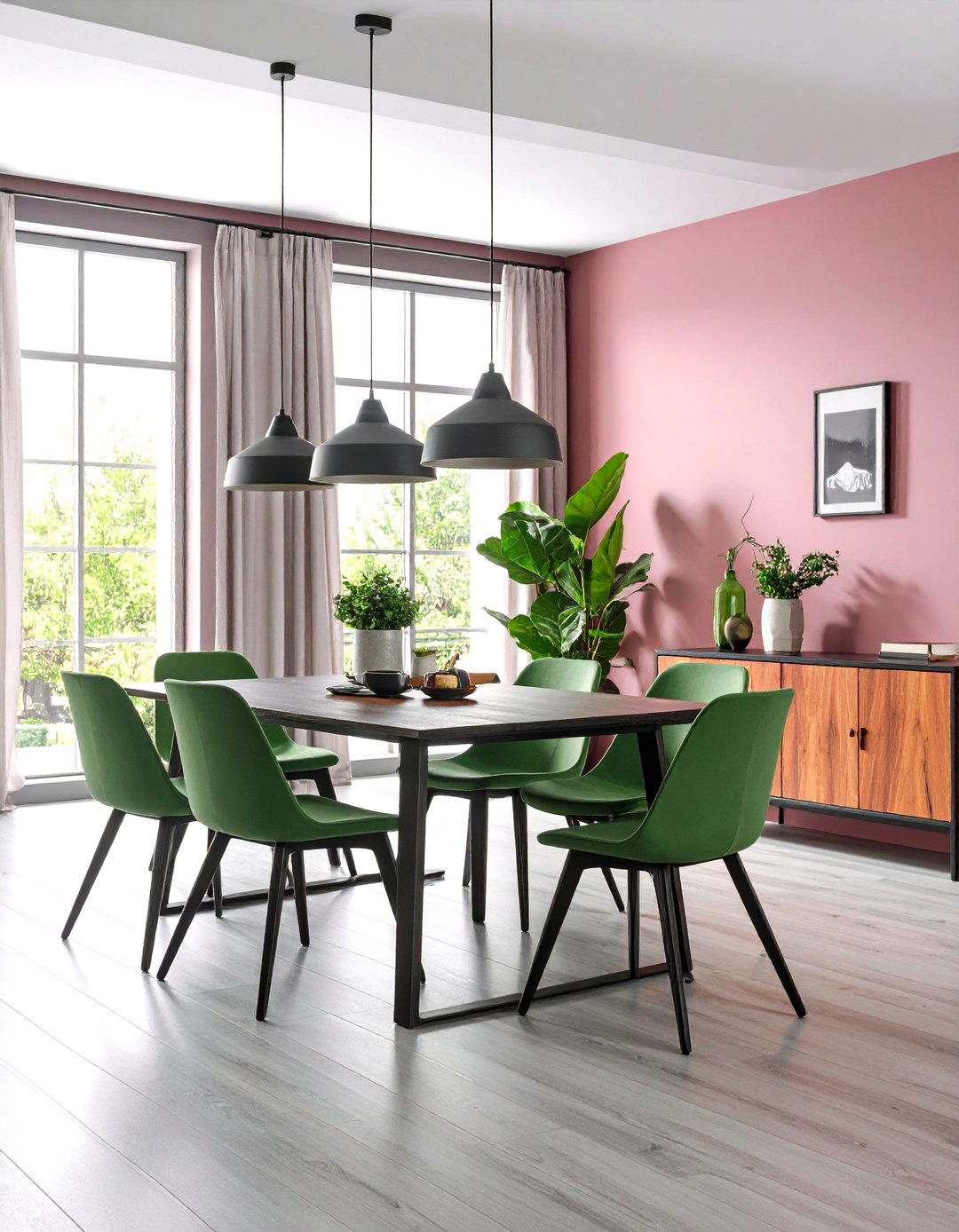
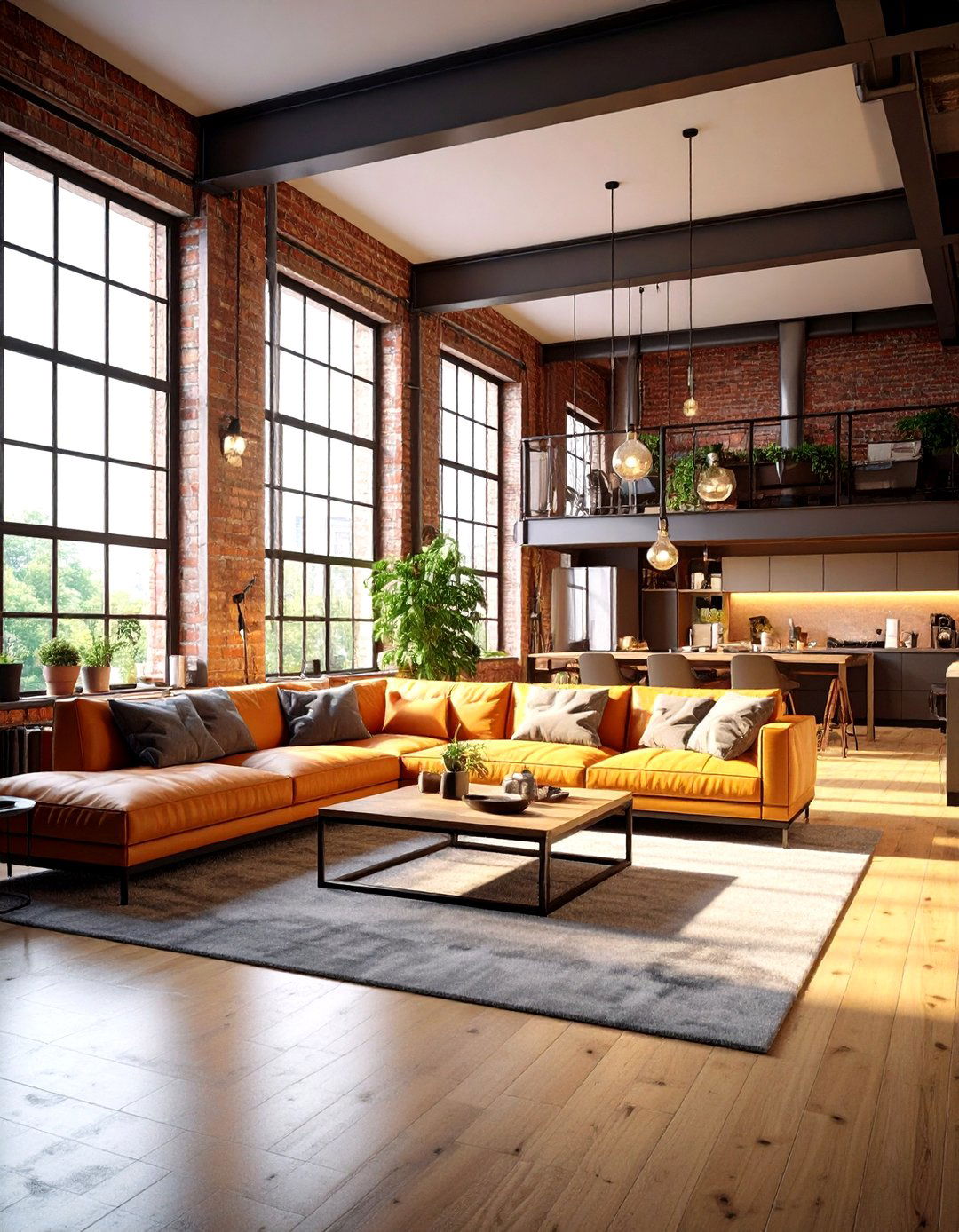
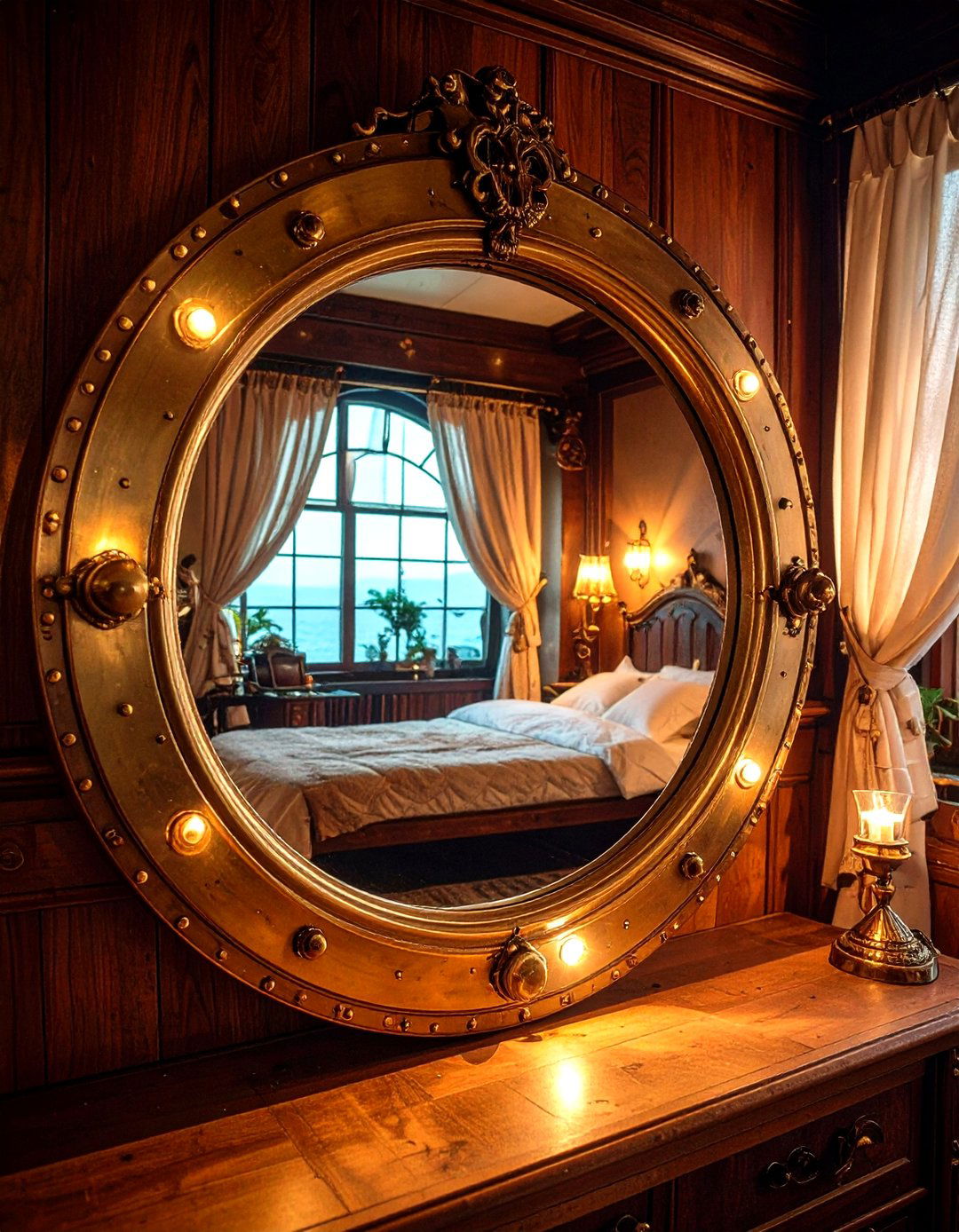

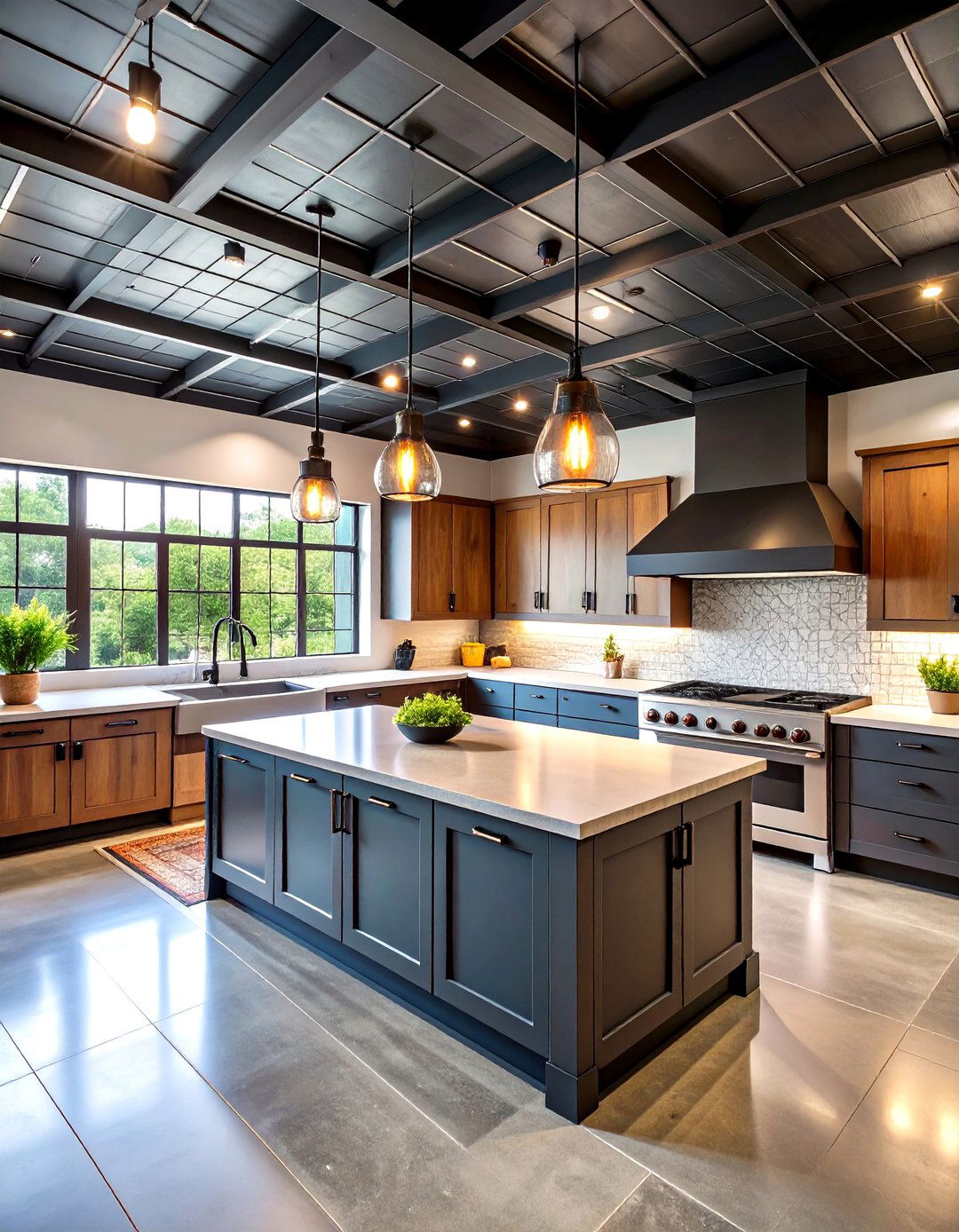
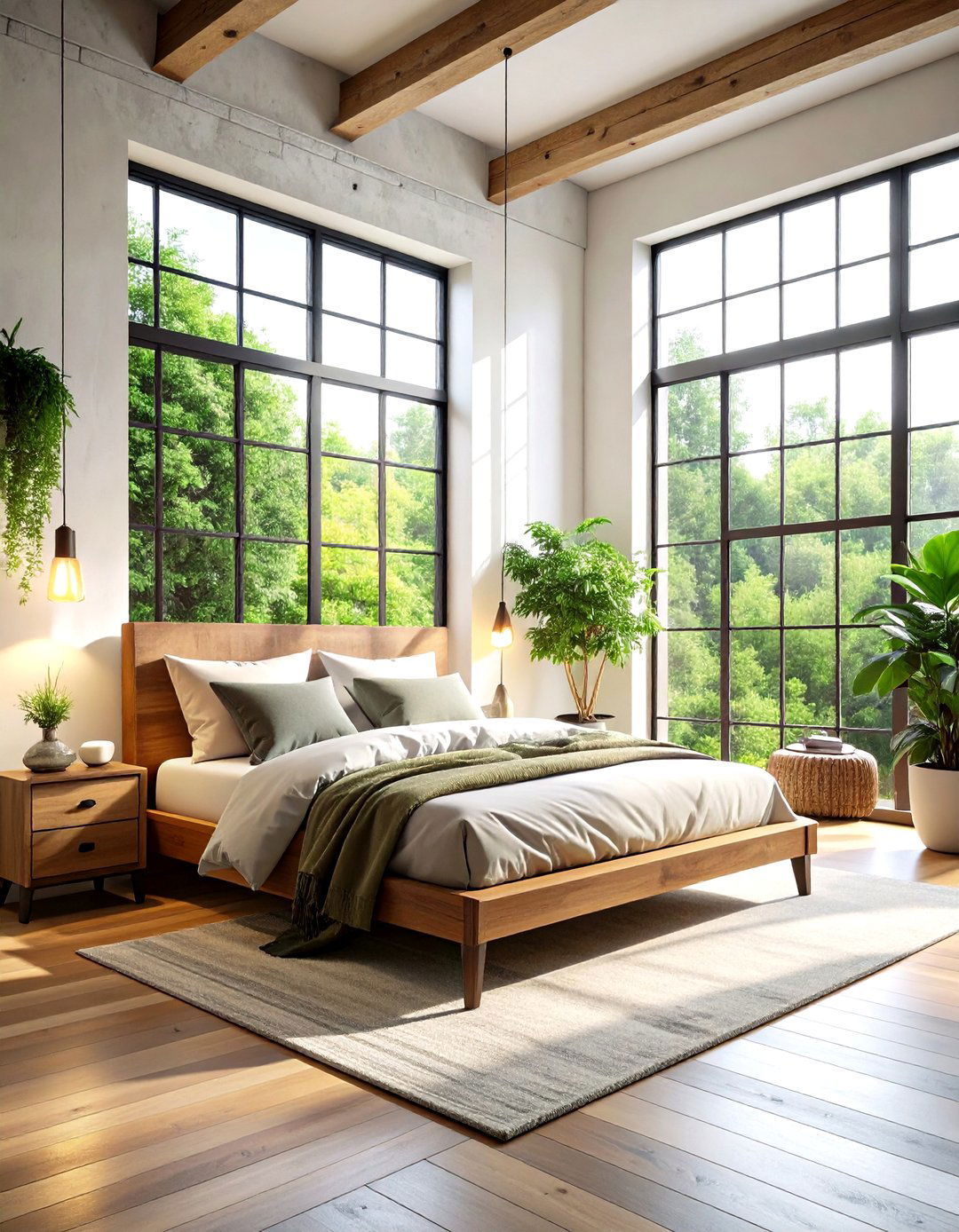
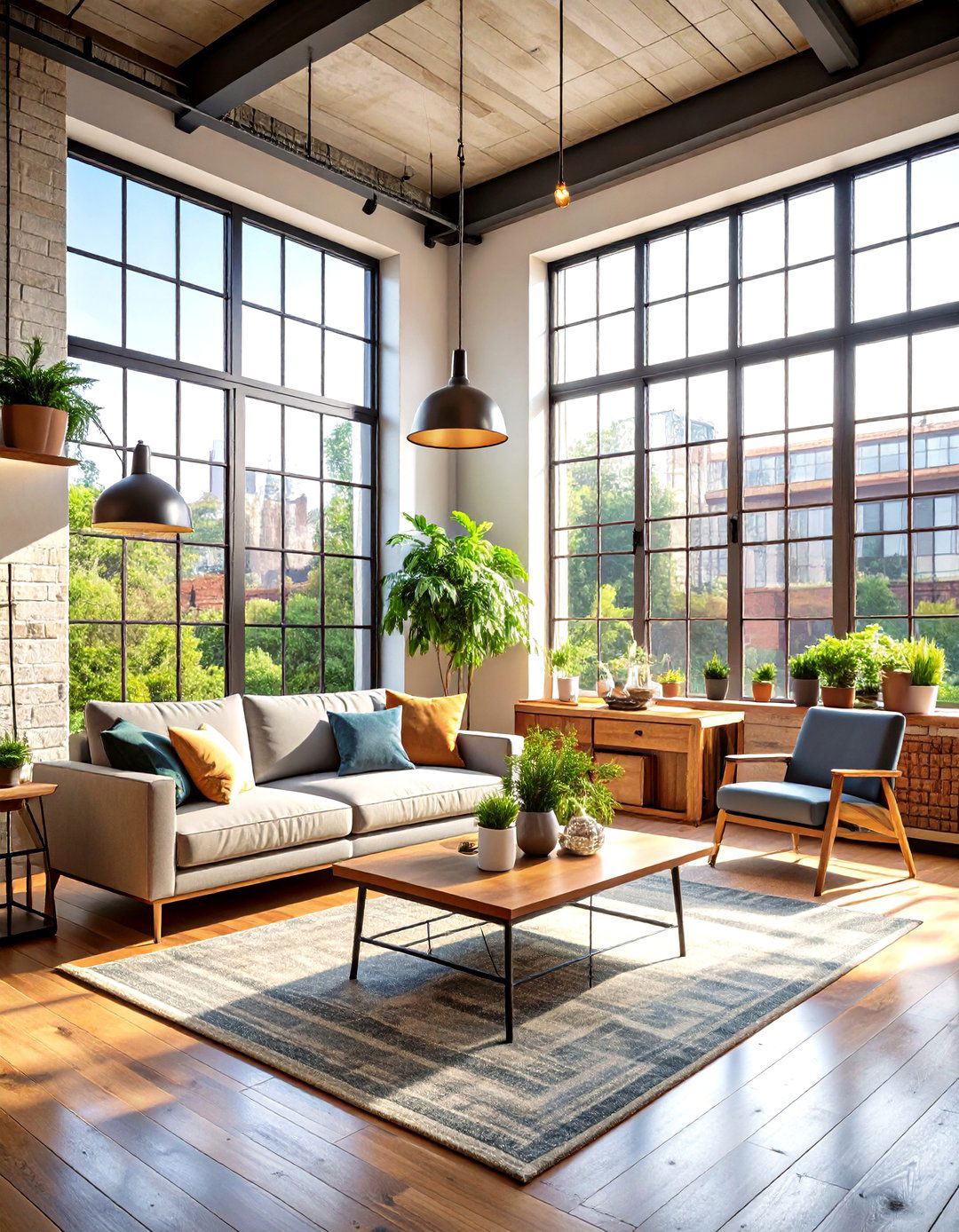

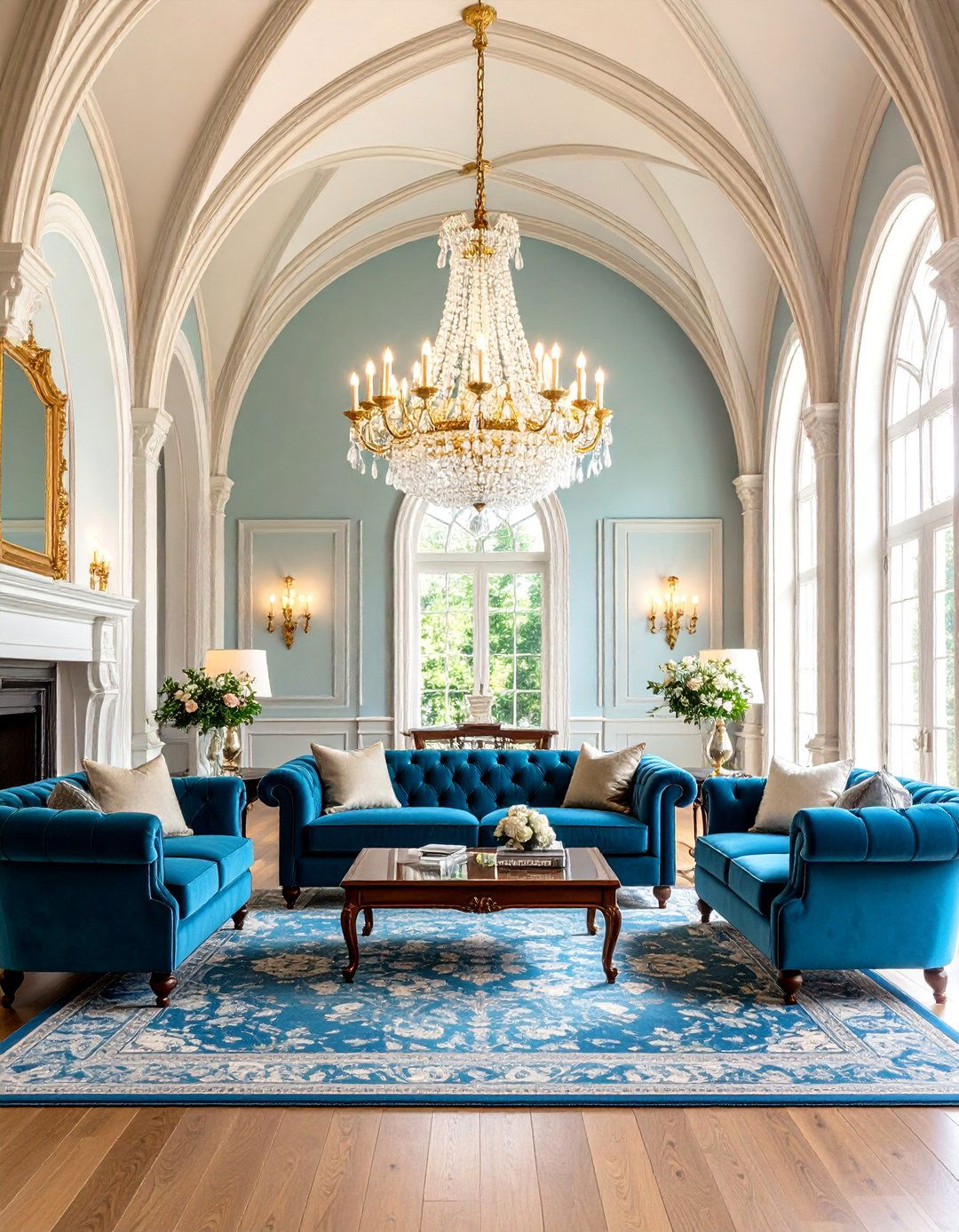
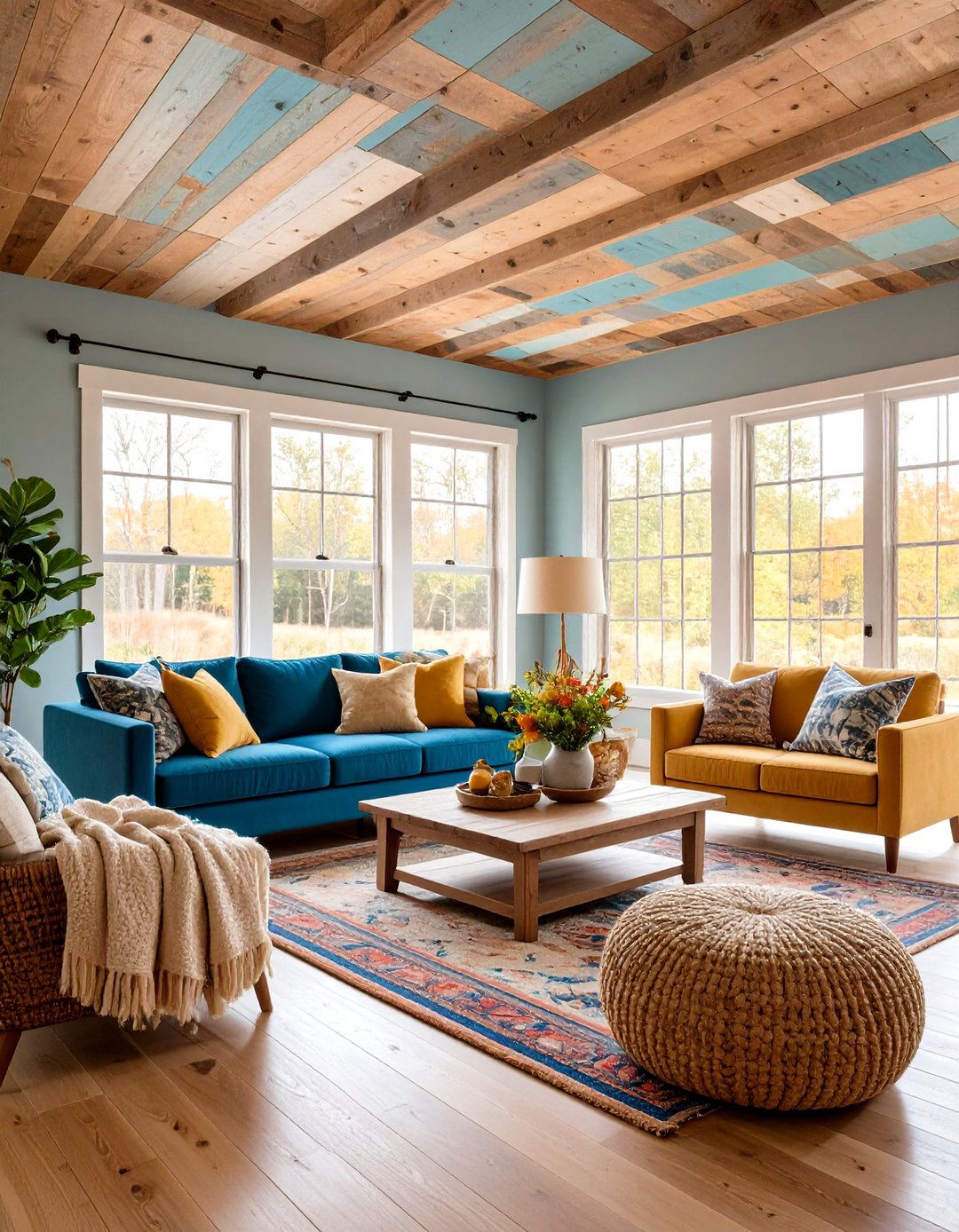
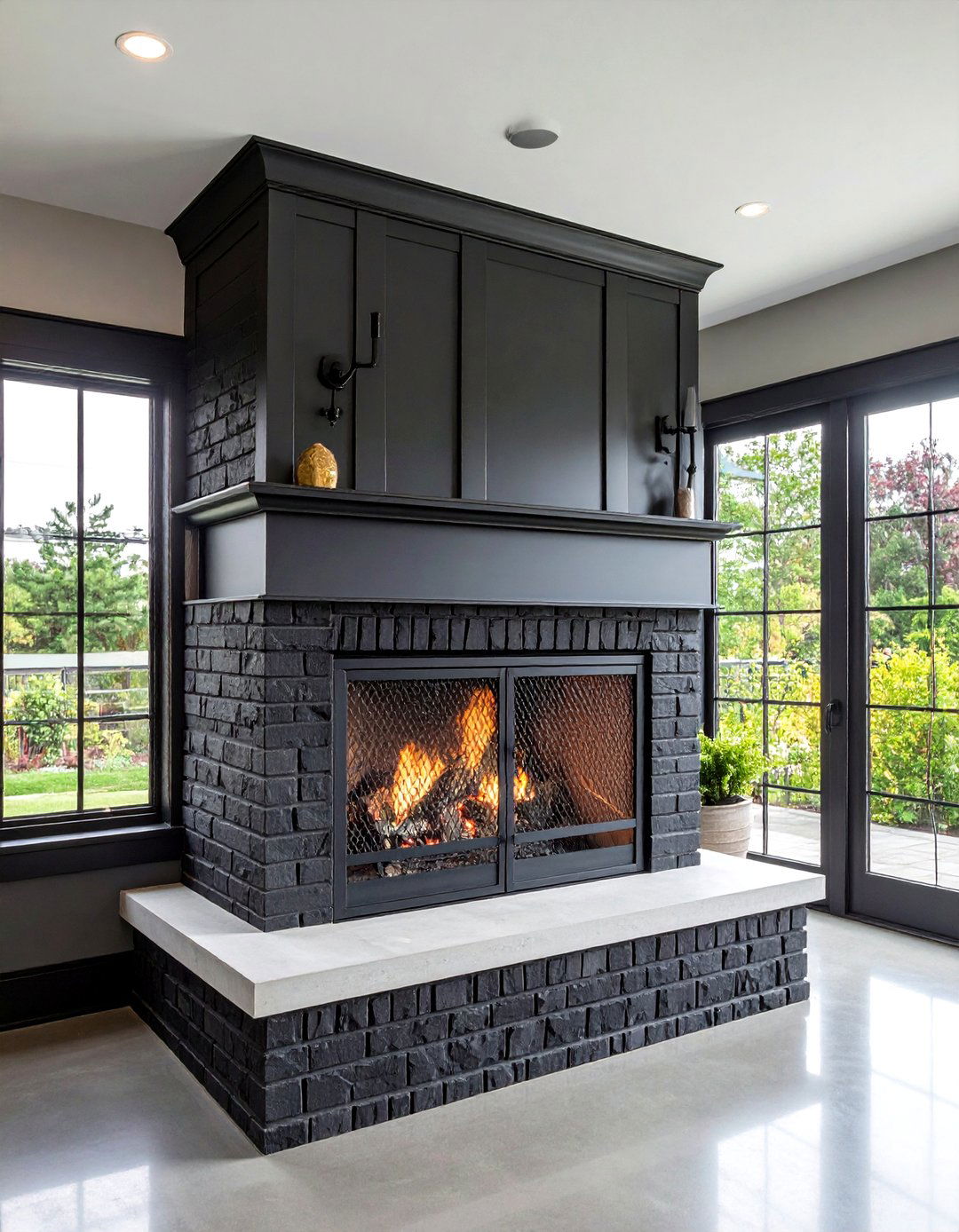
Leave a Reply